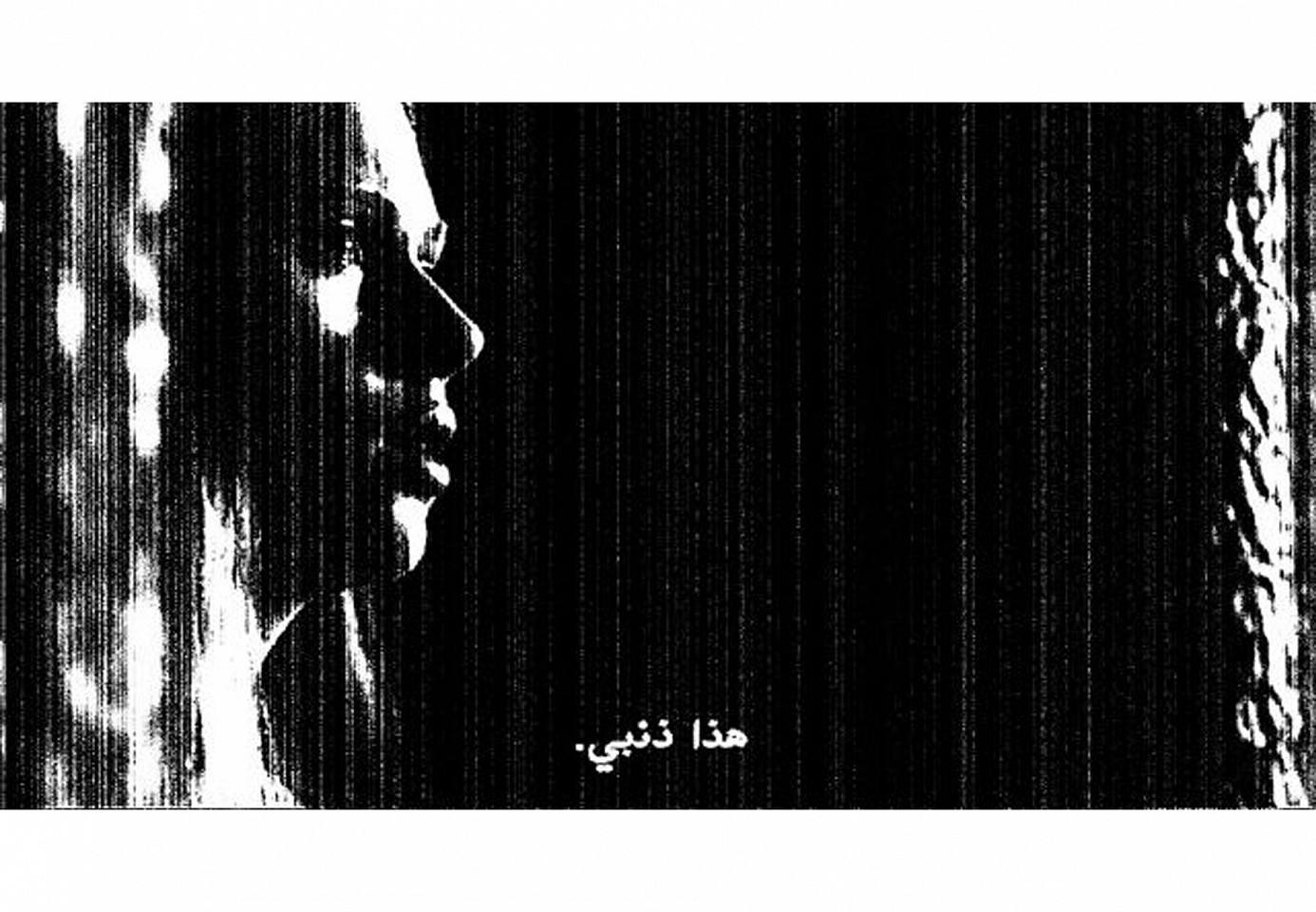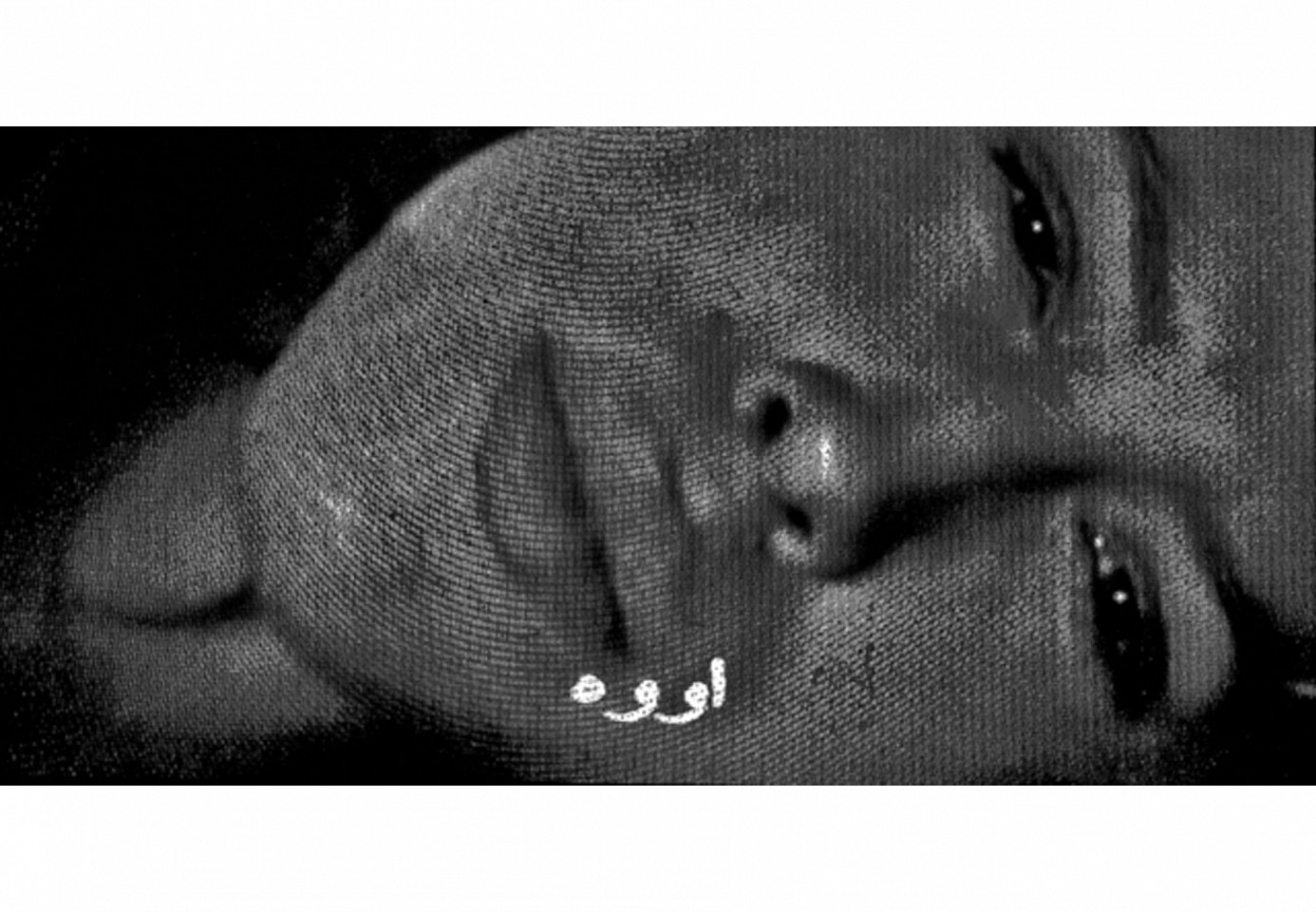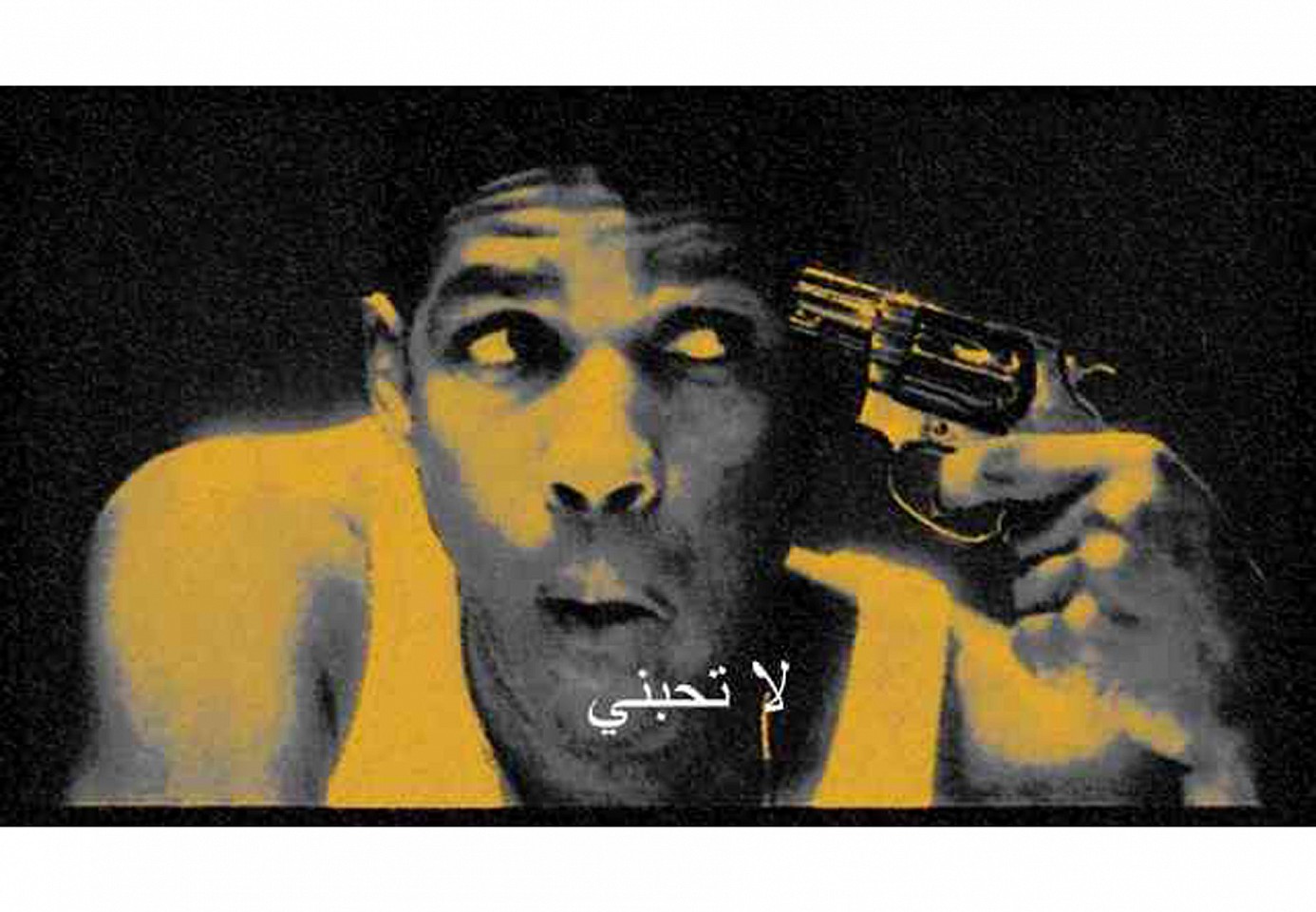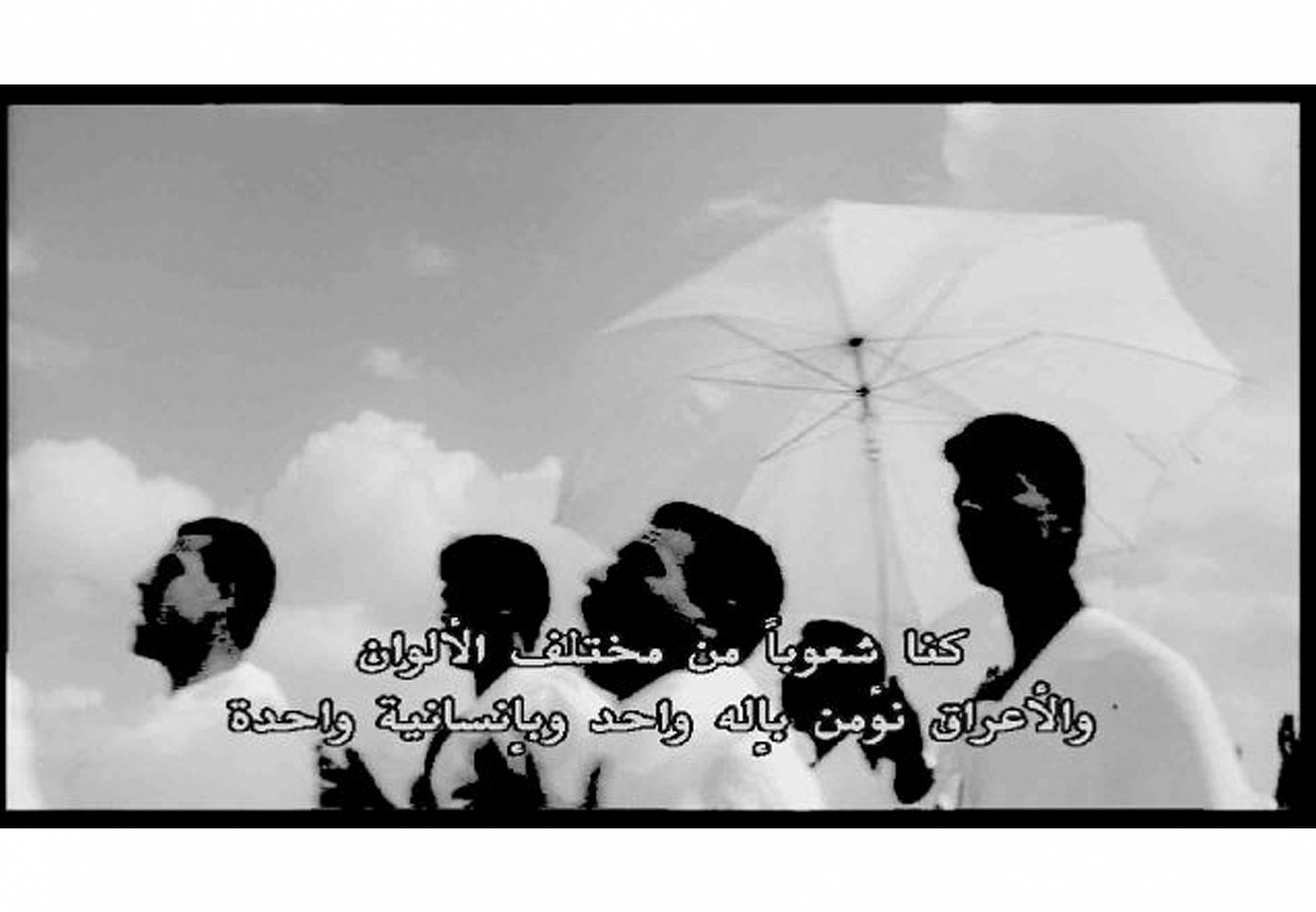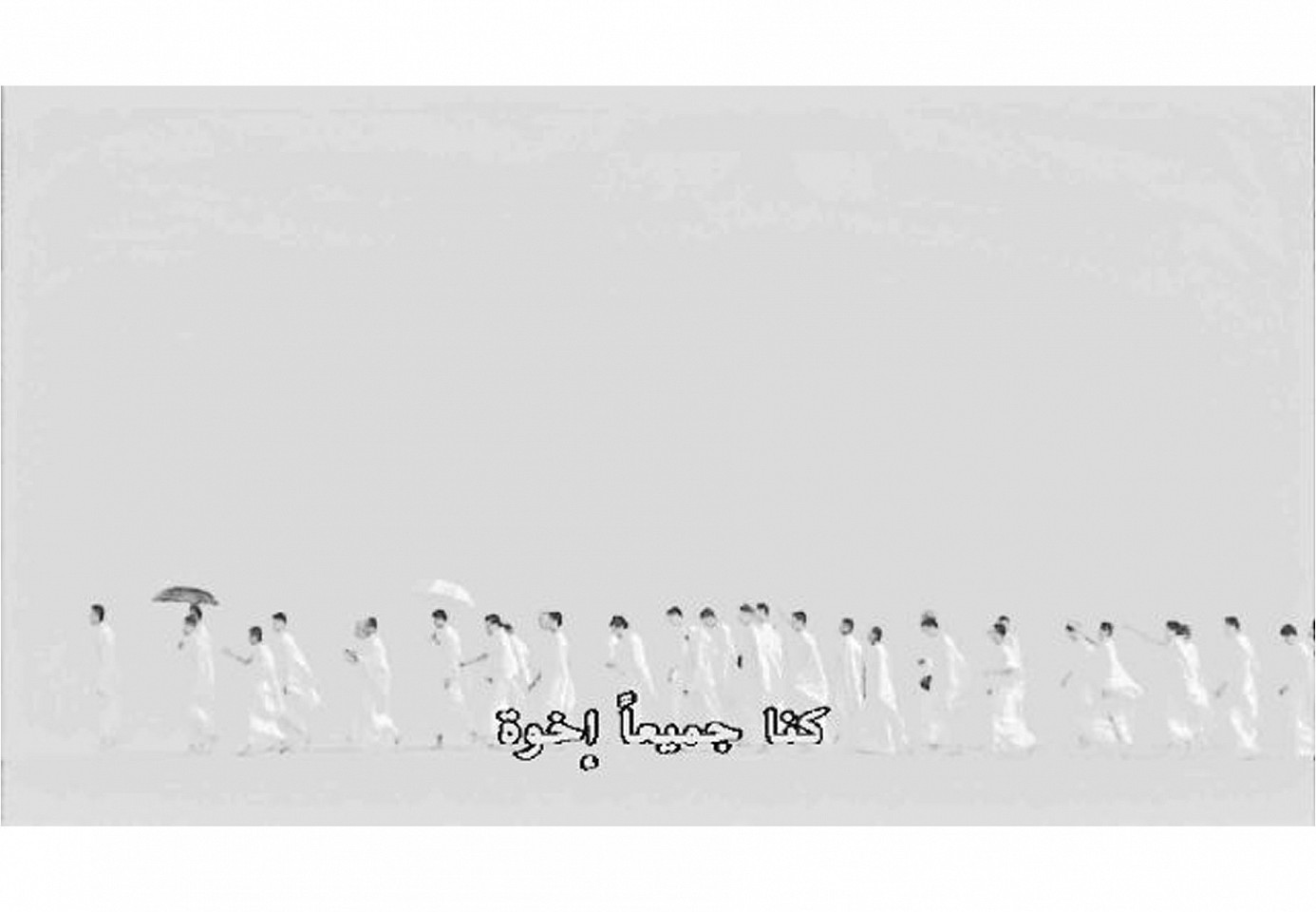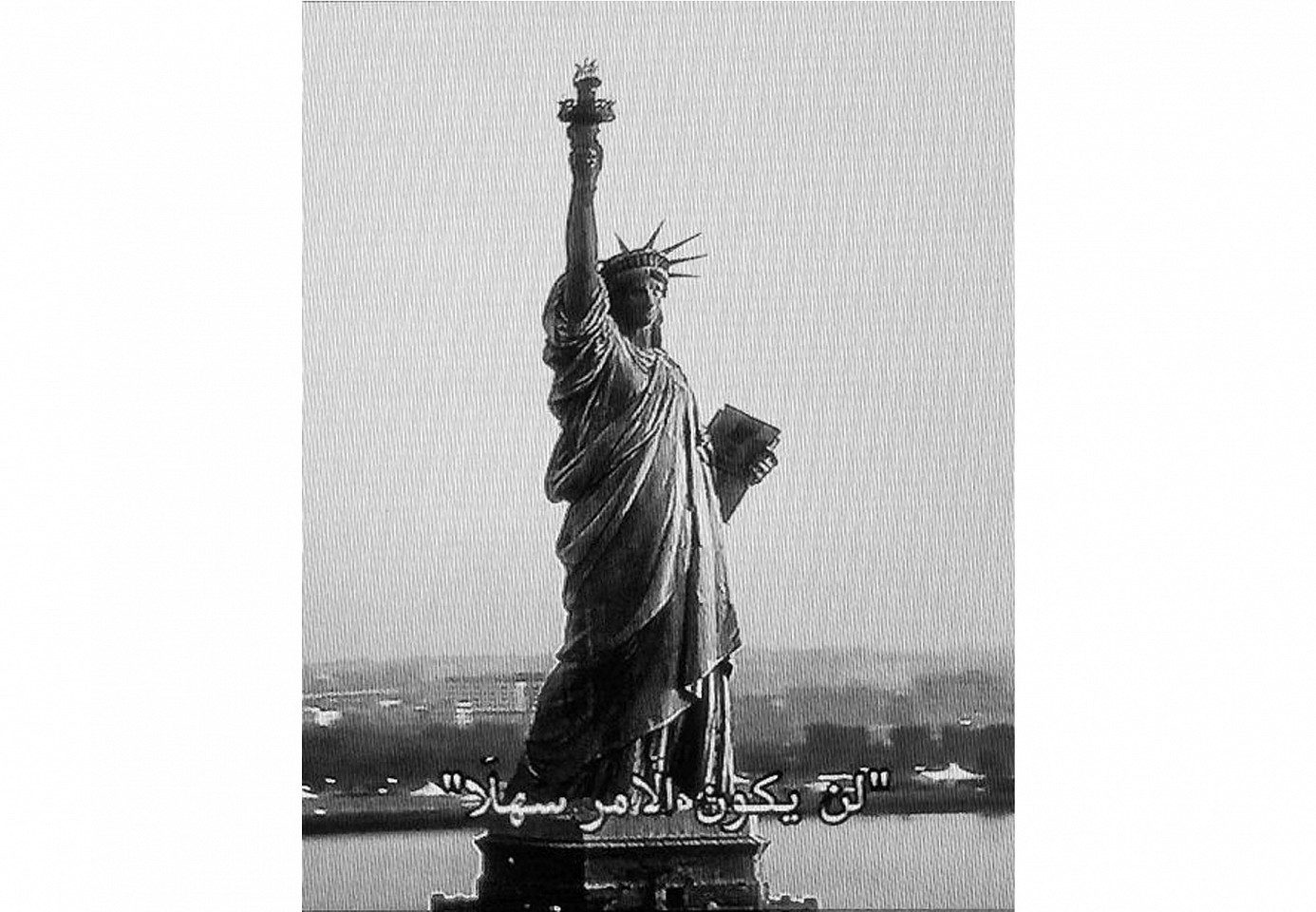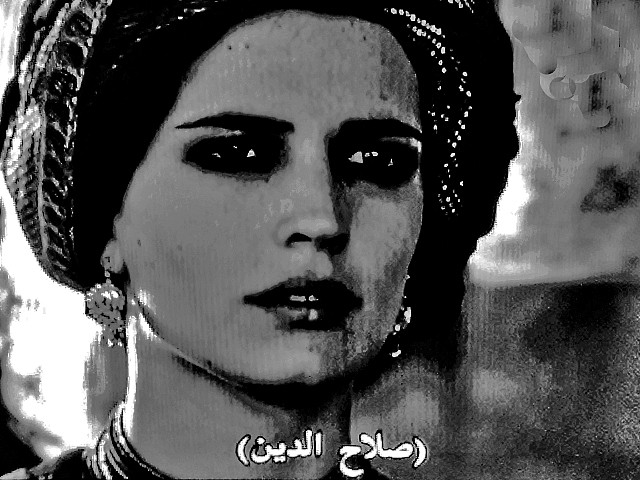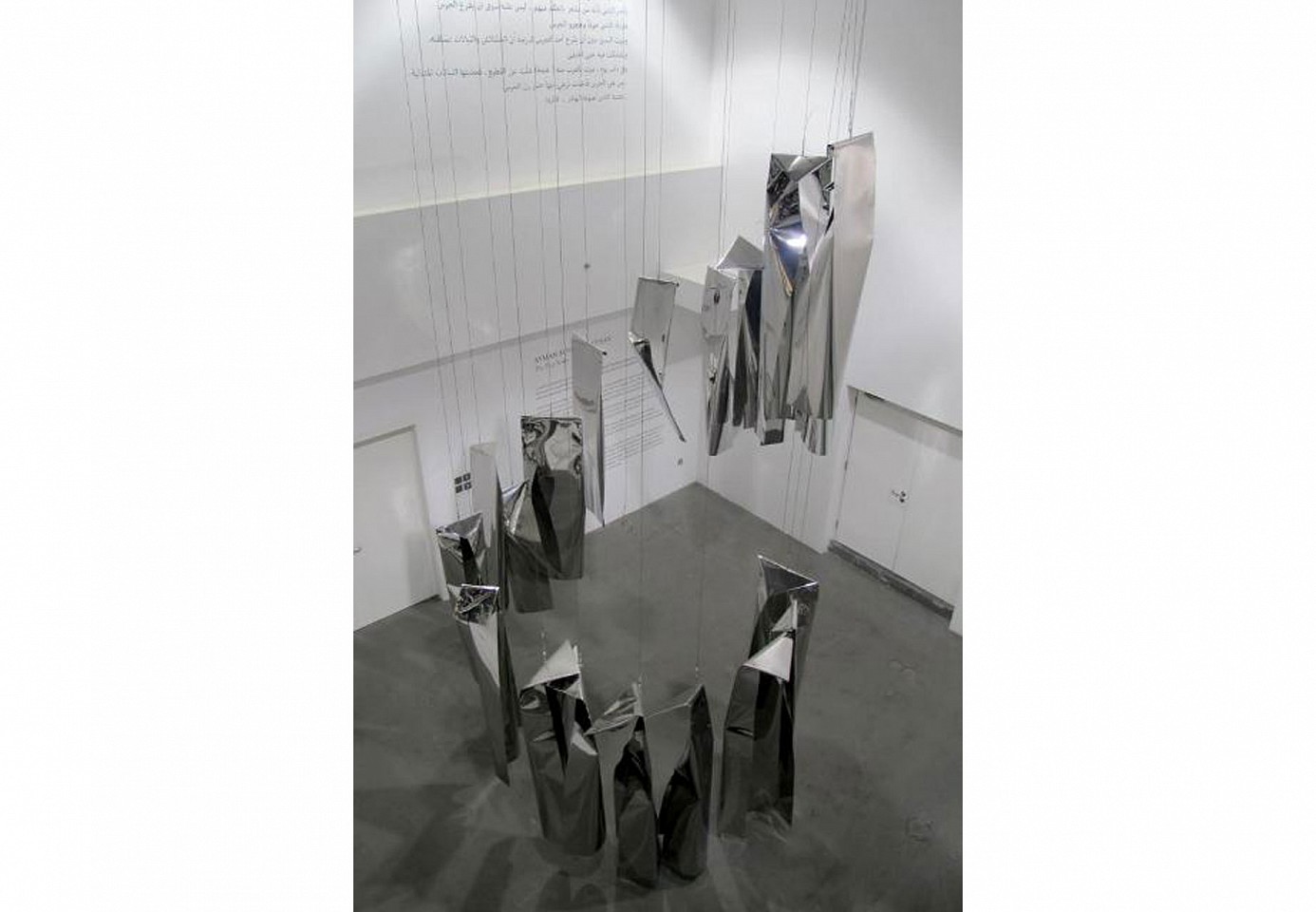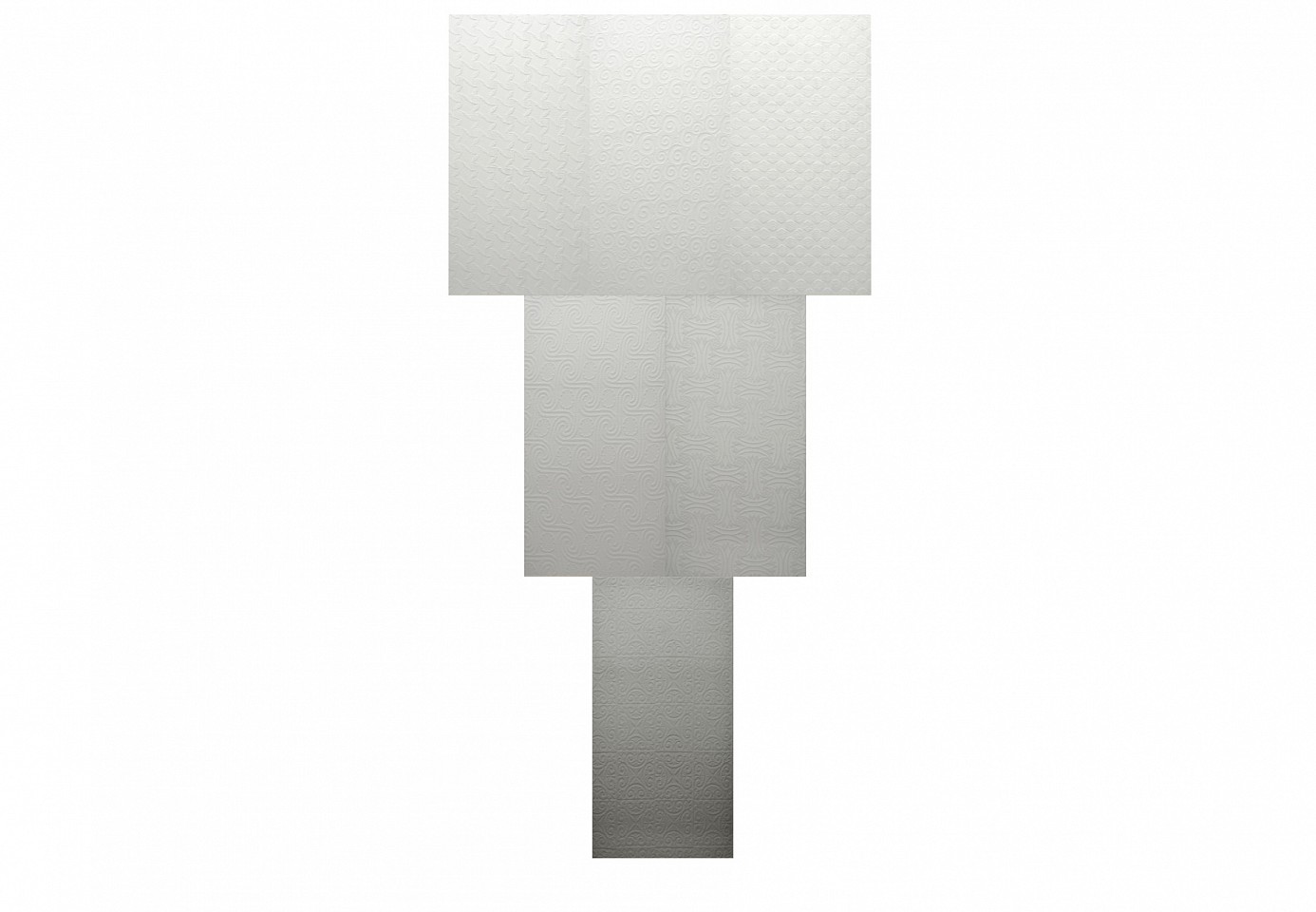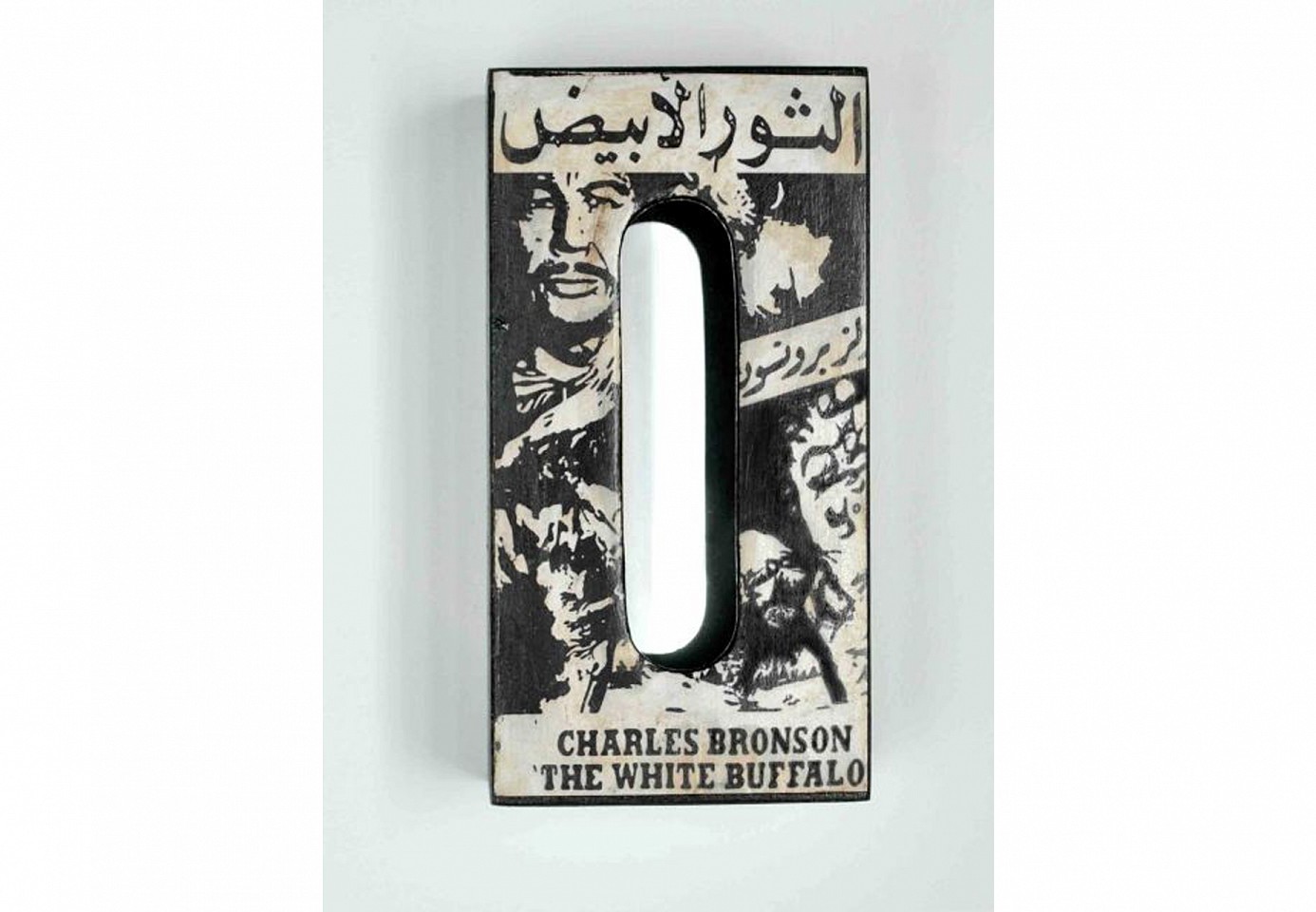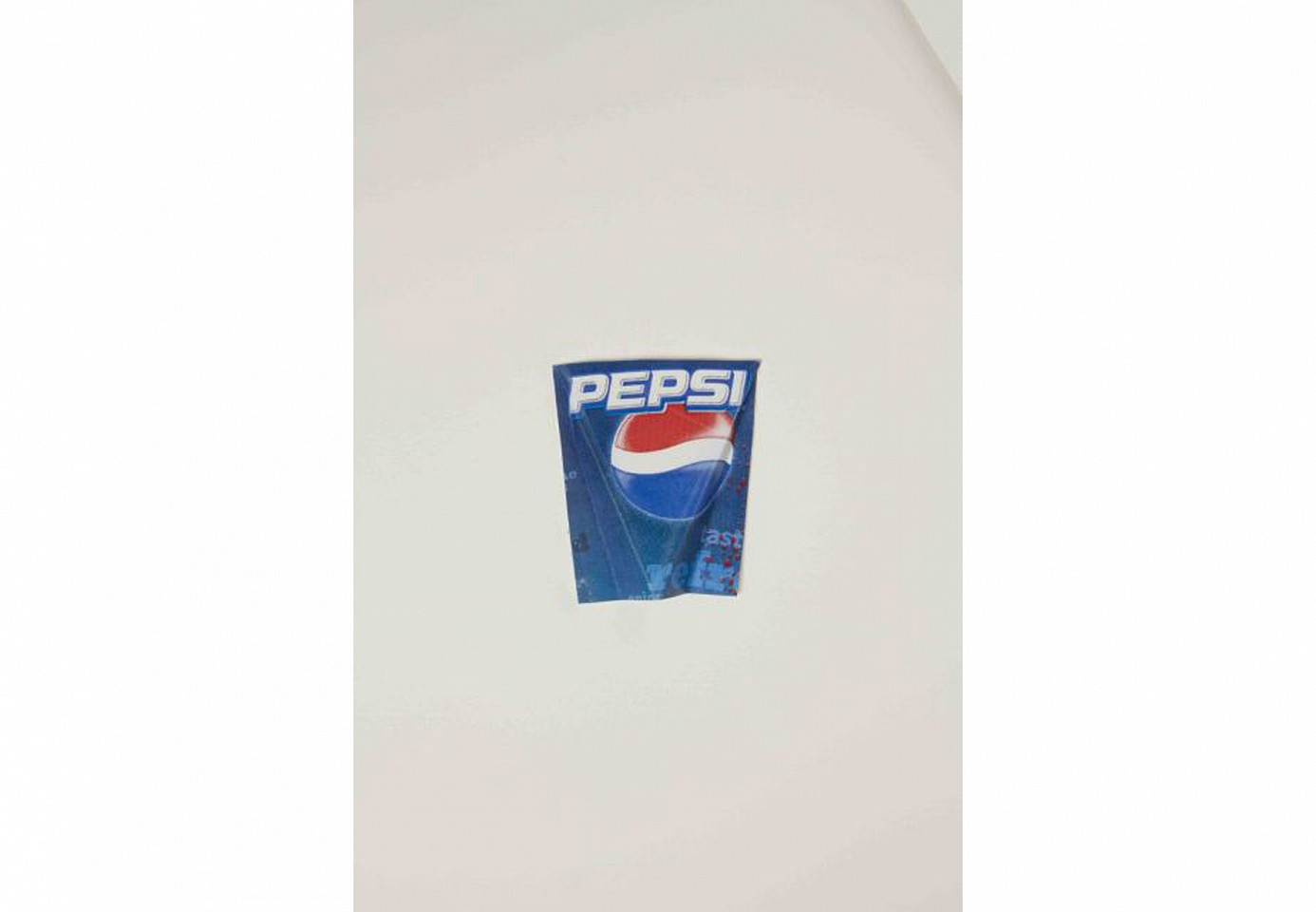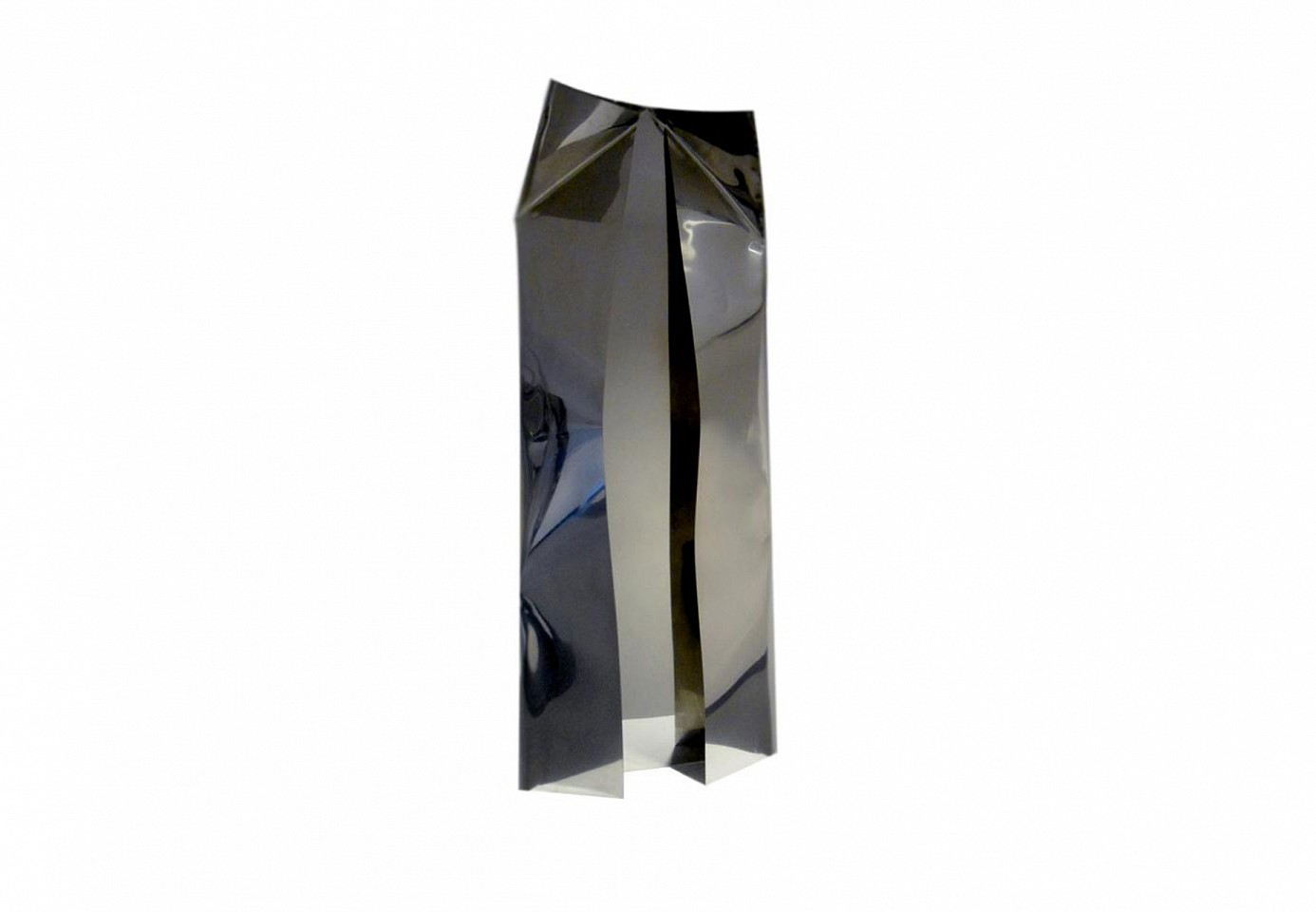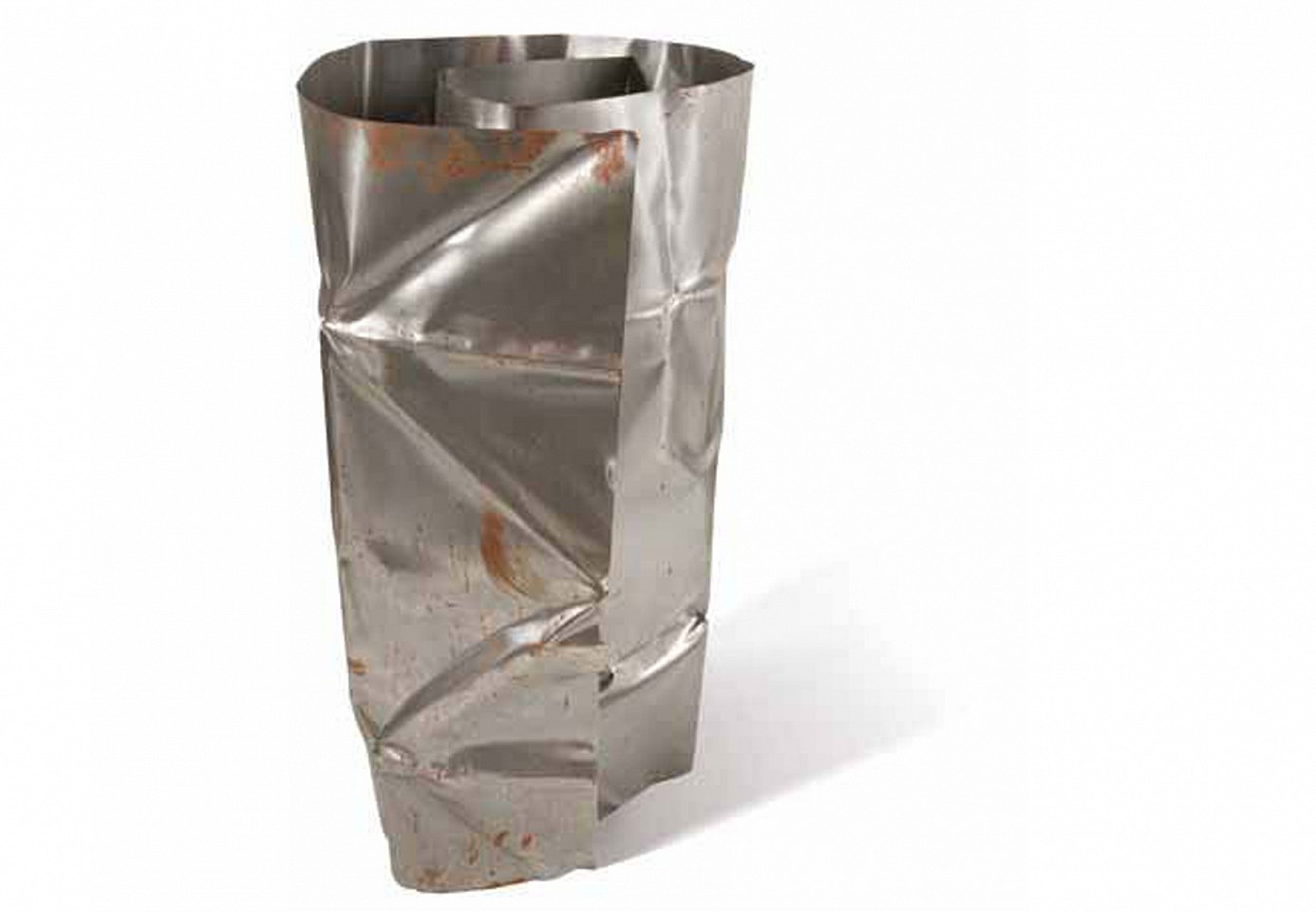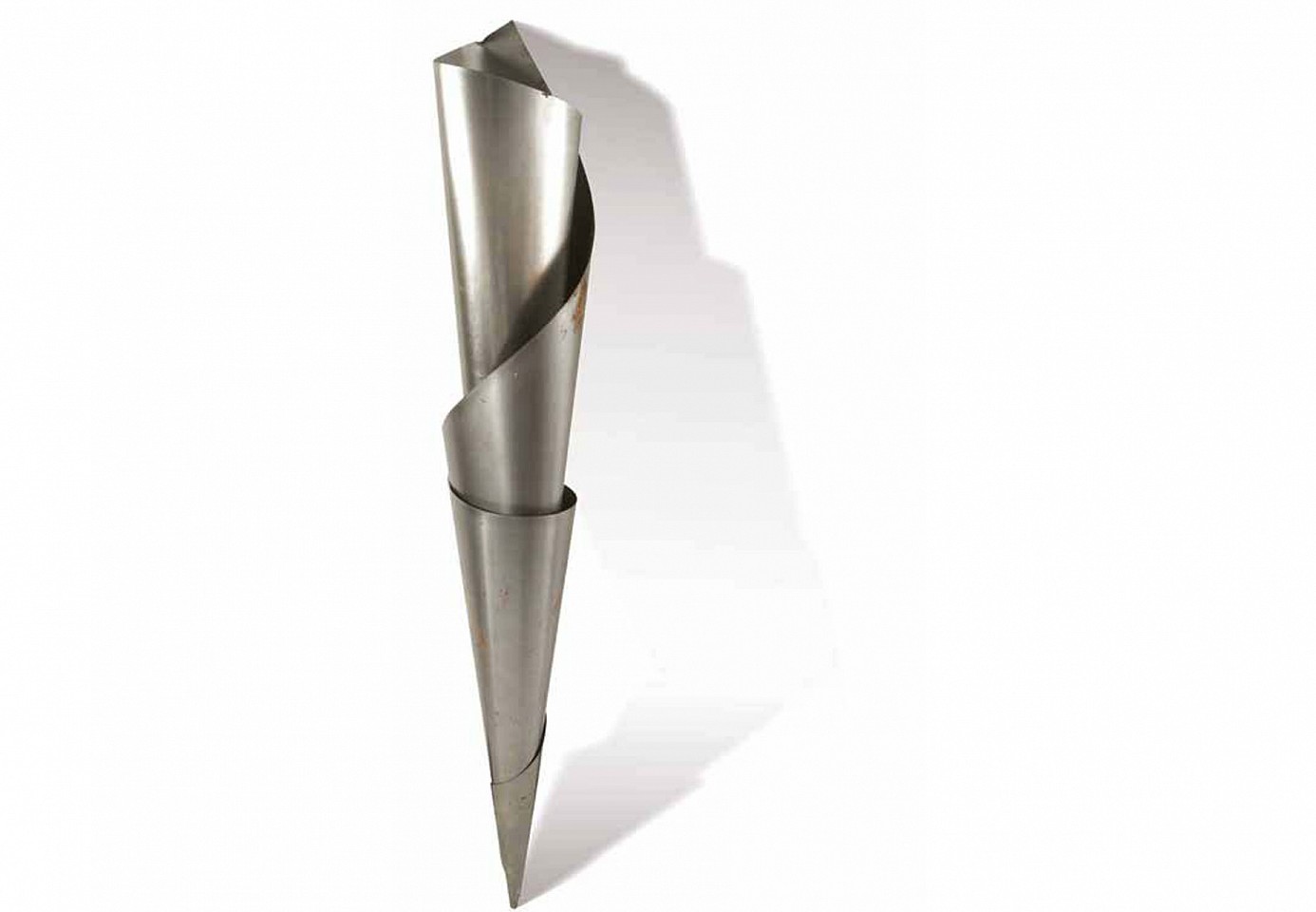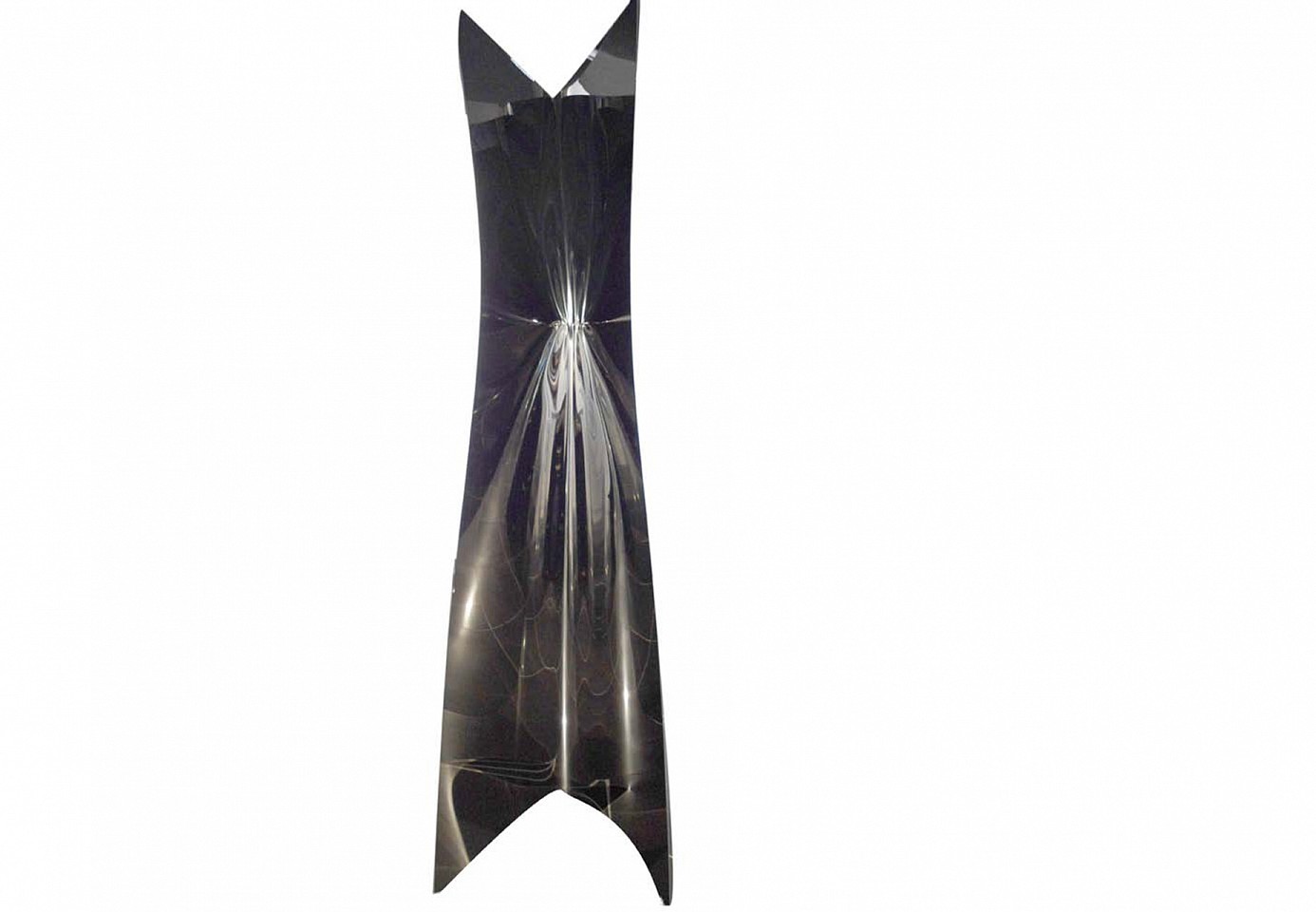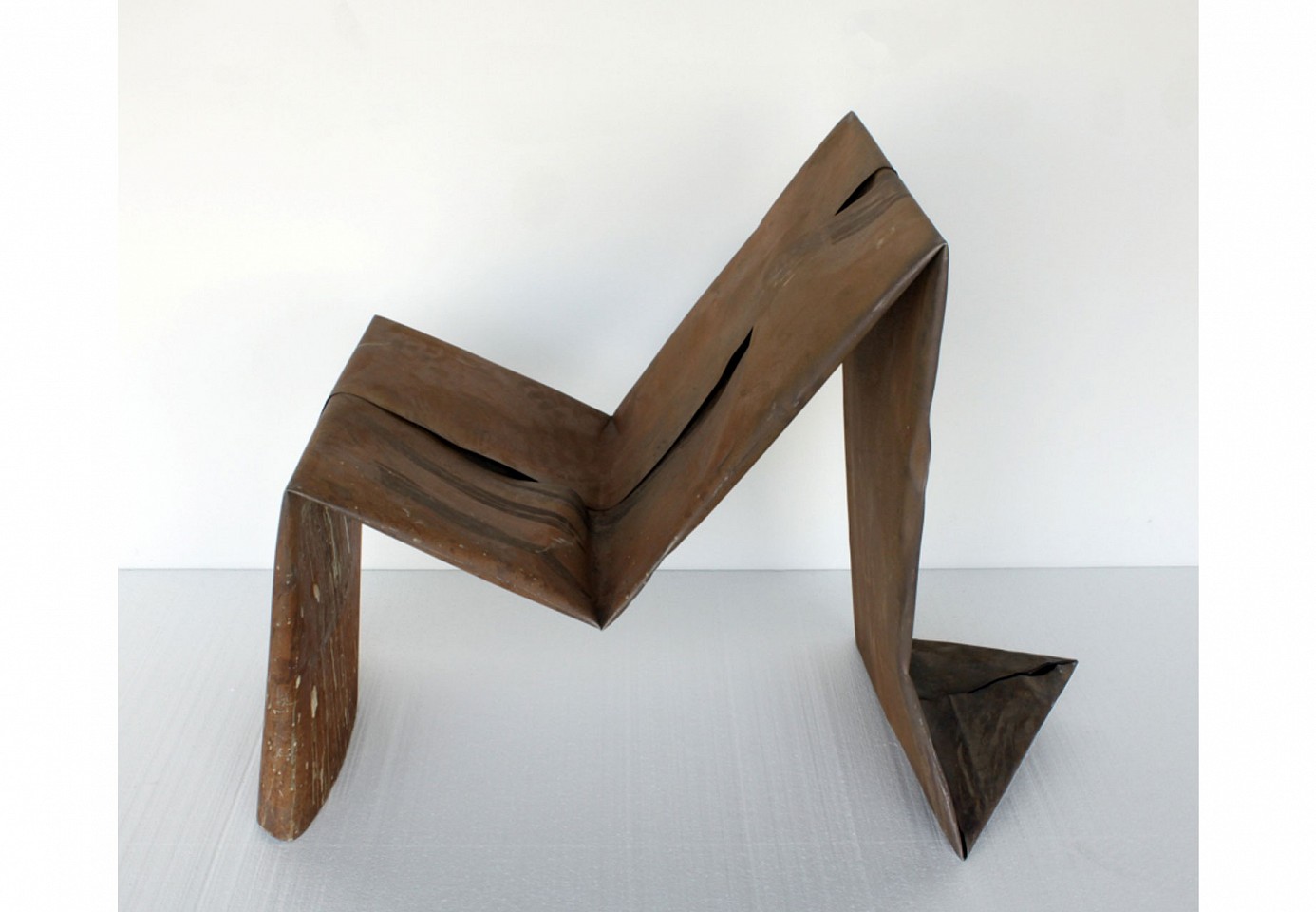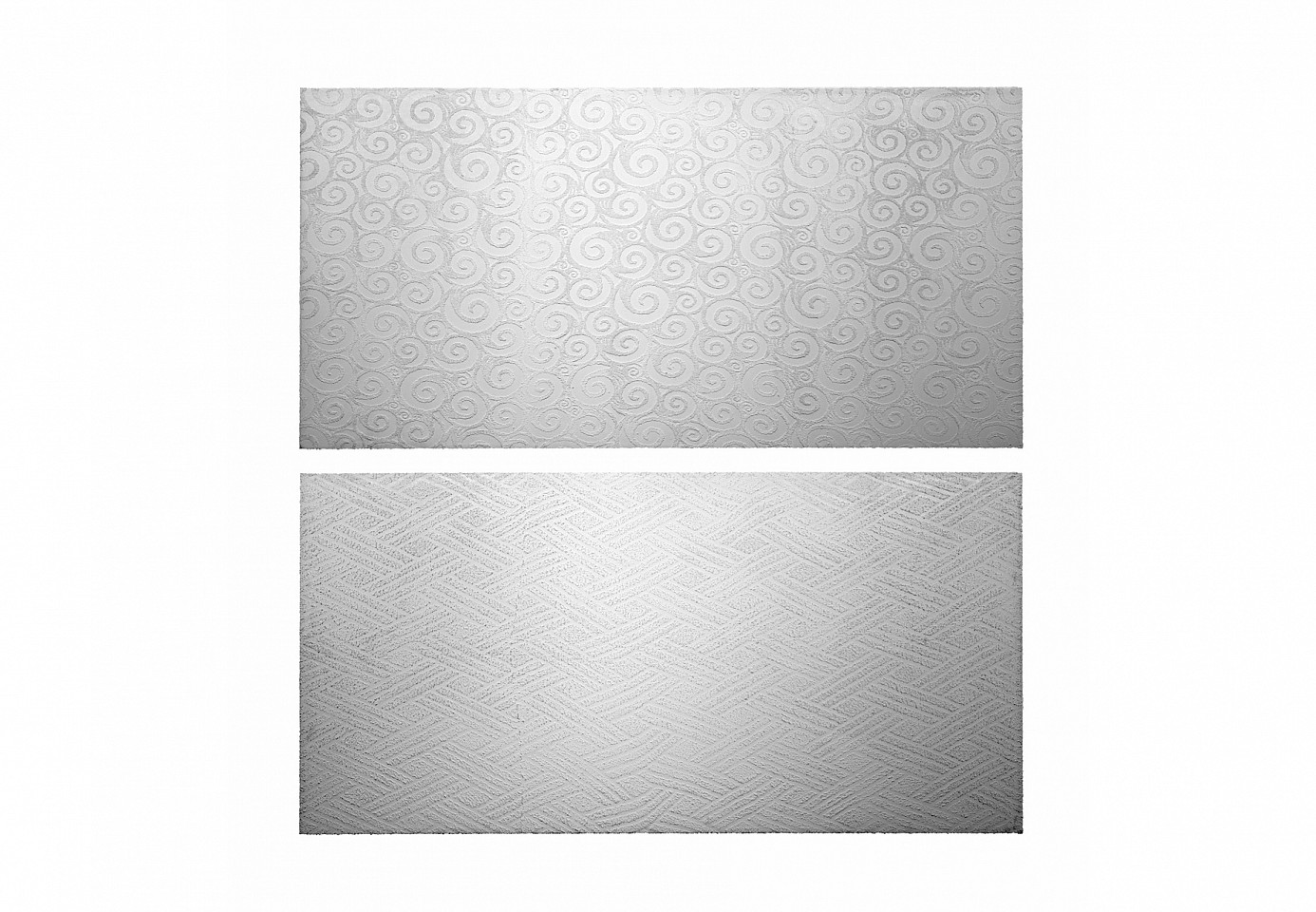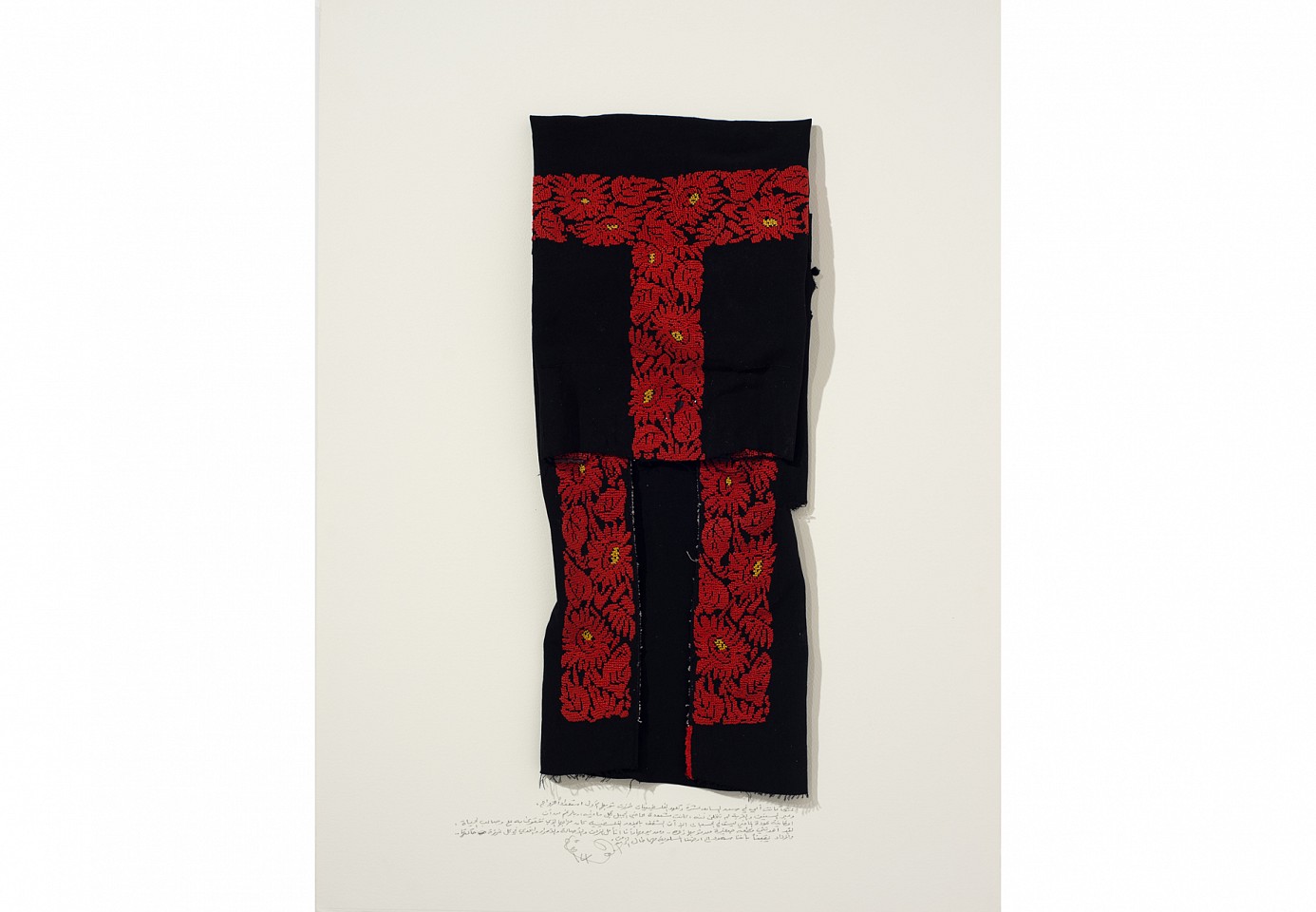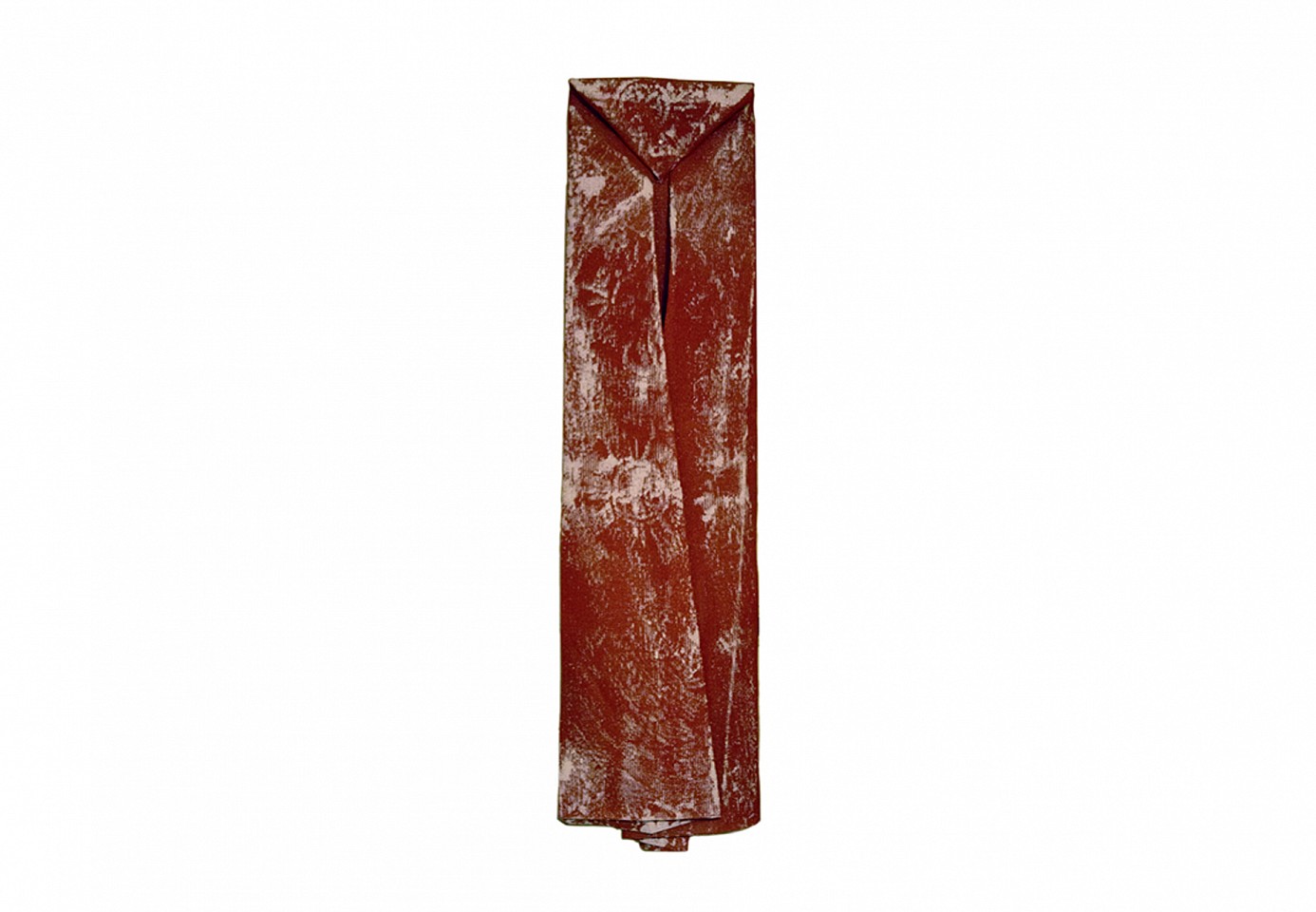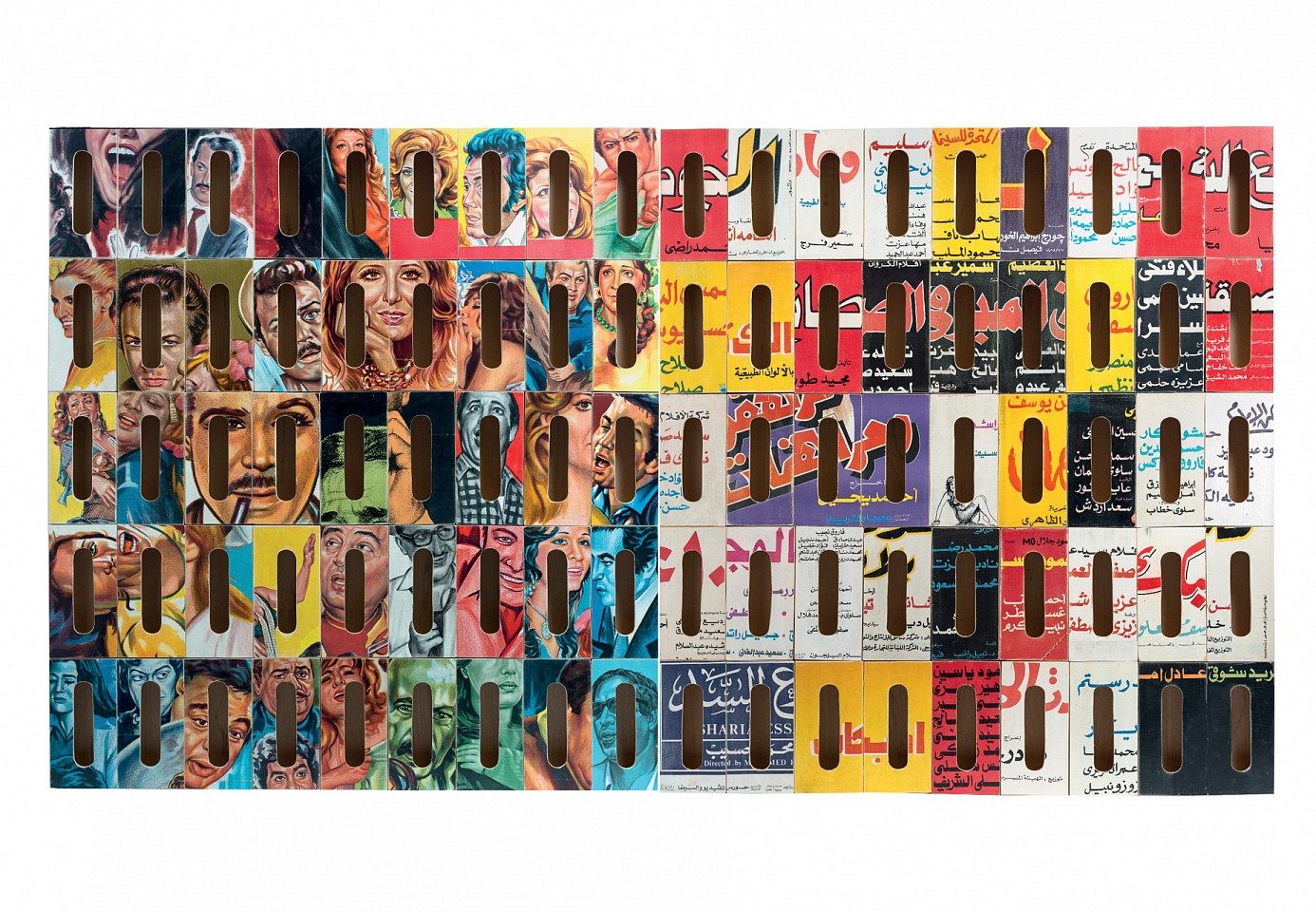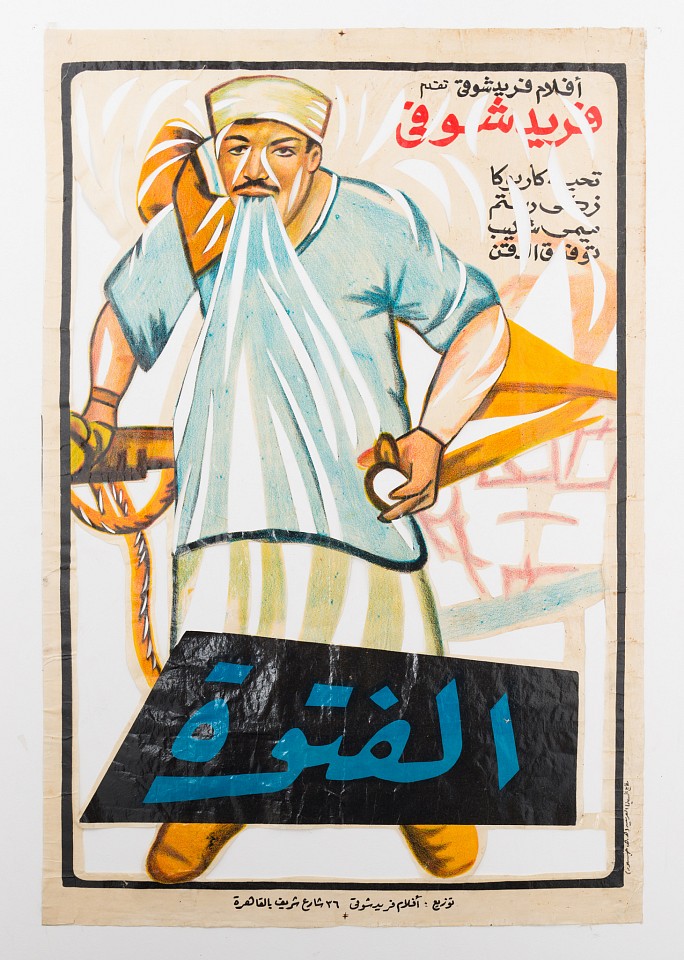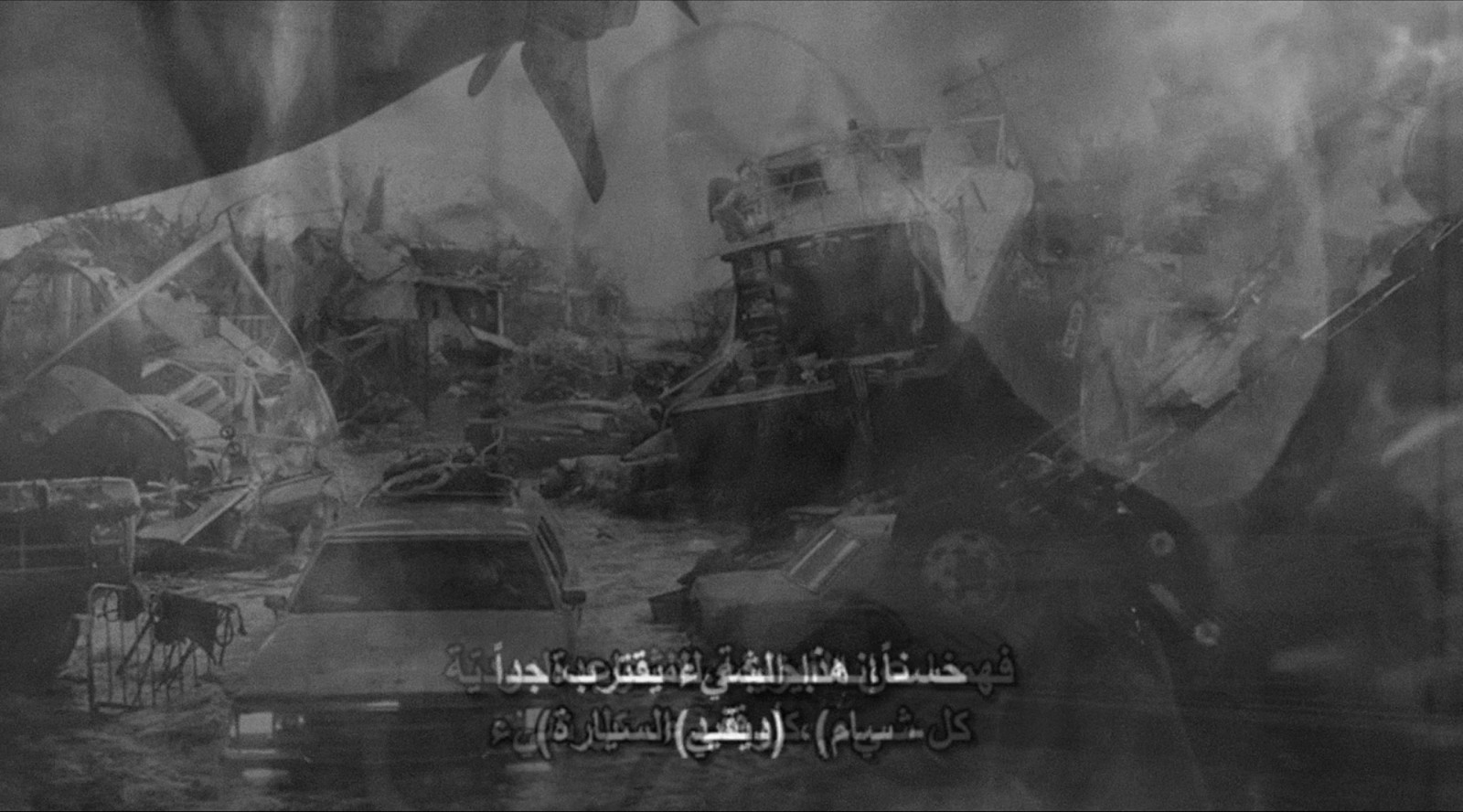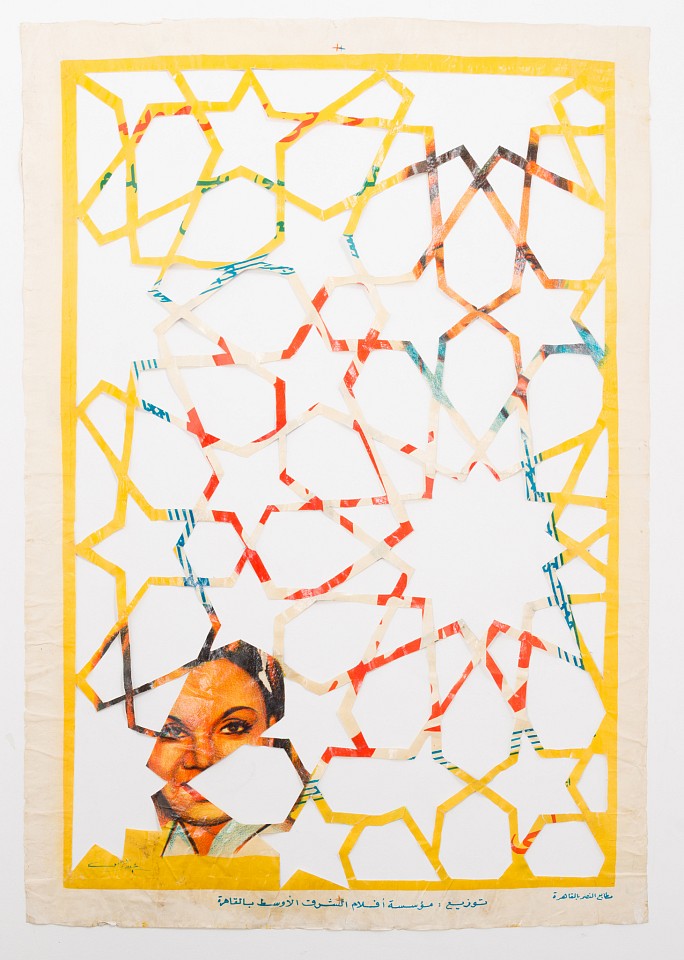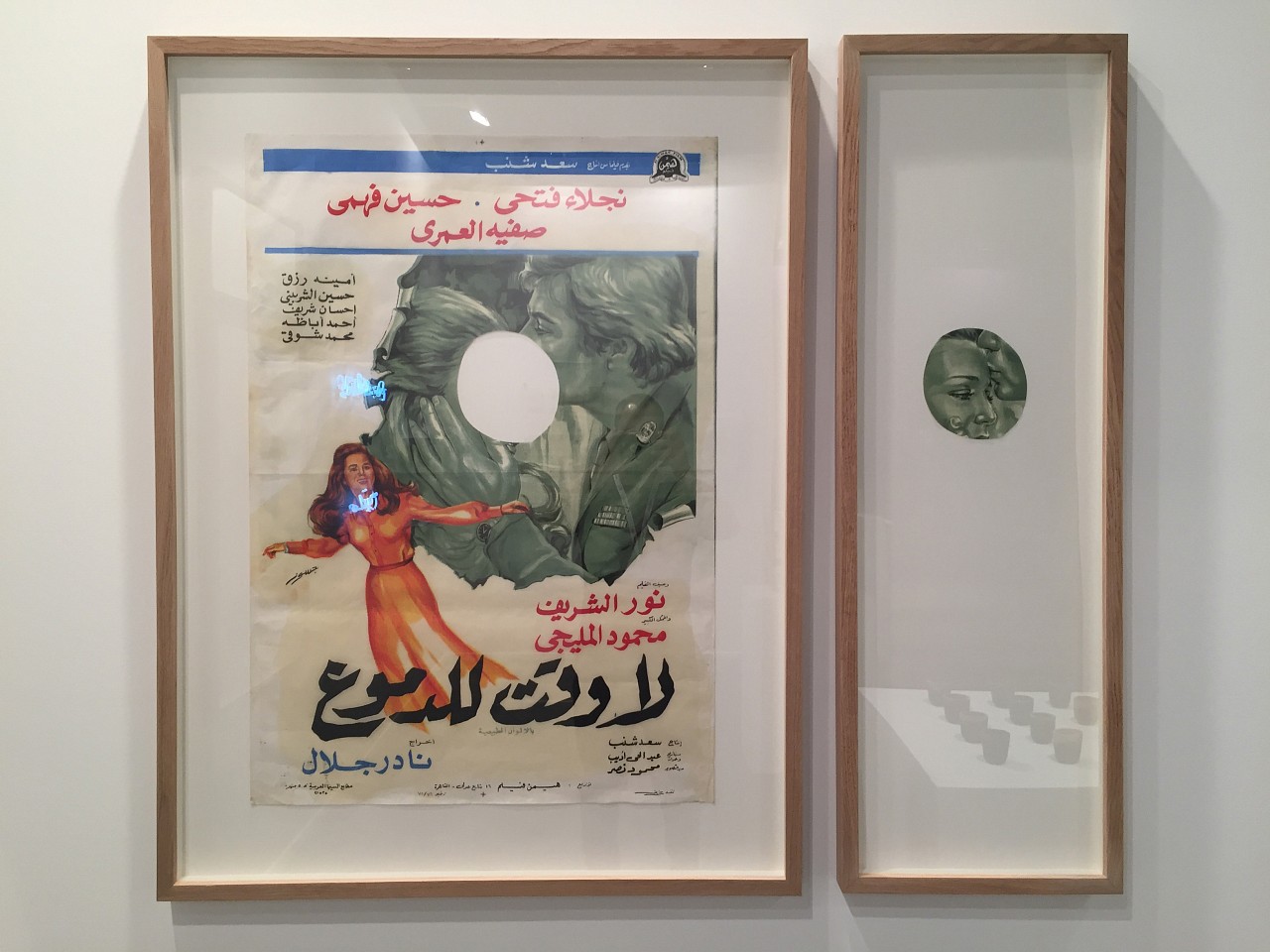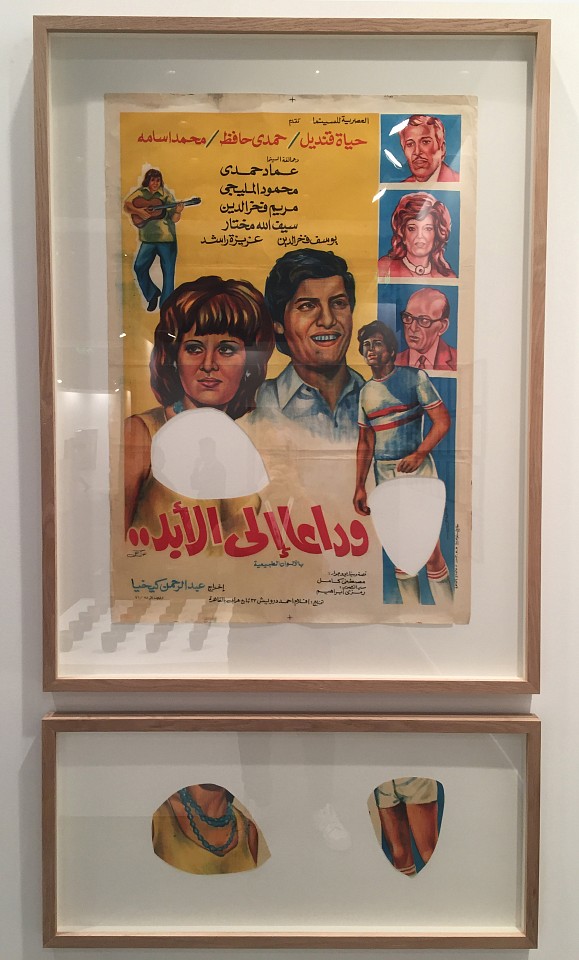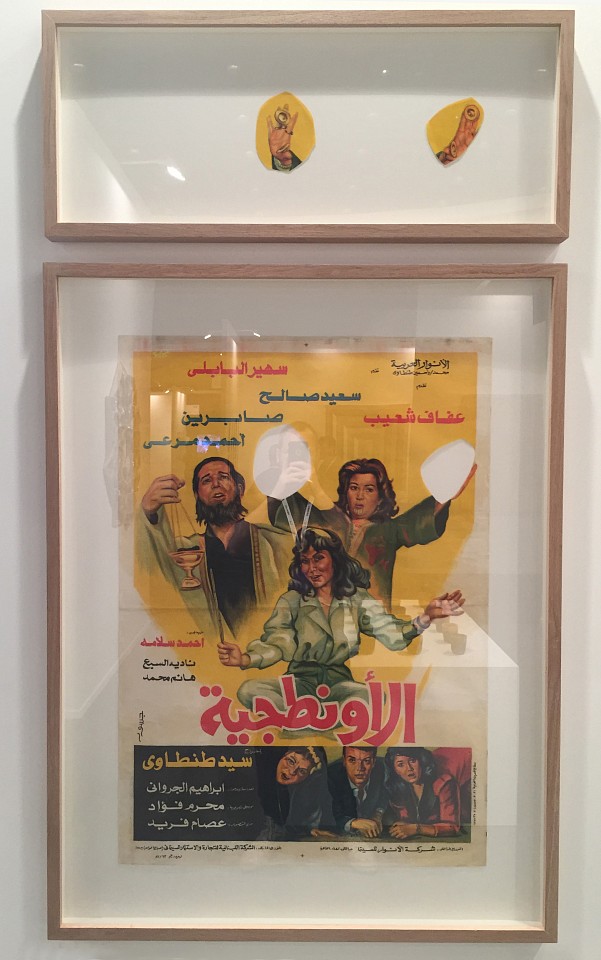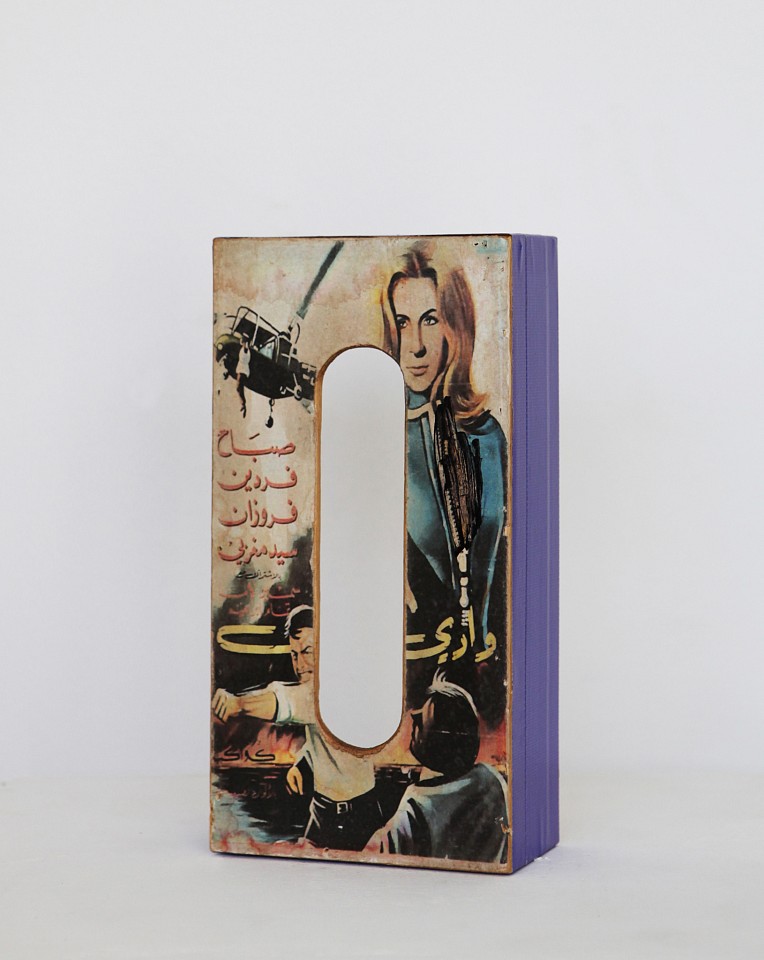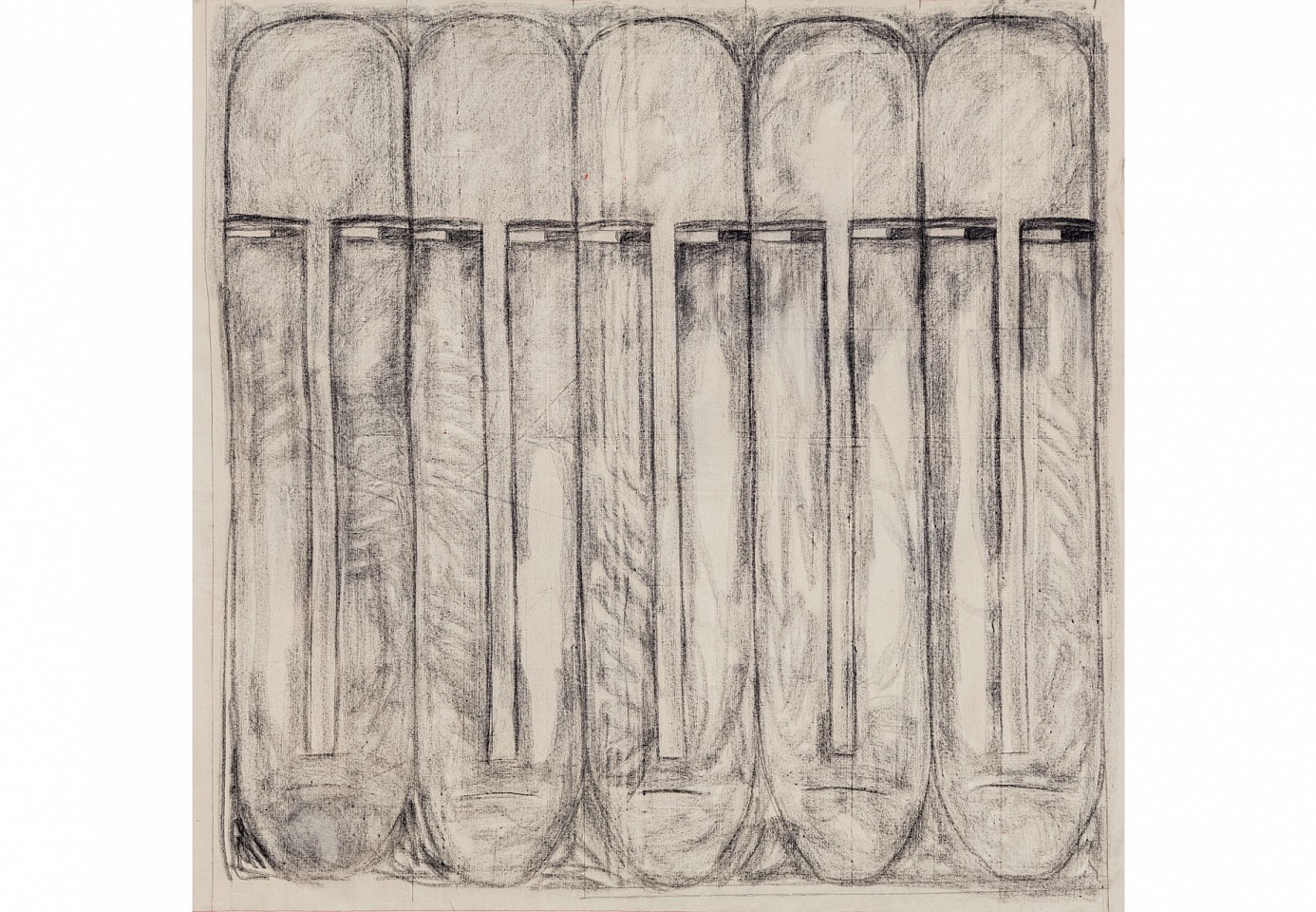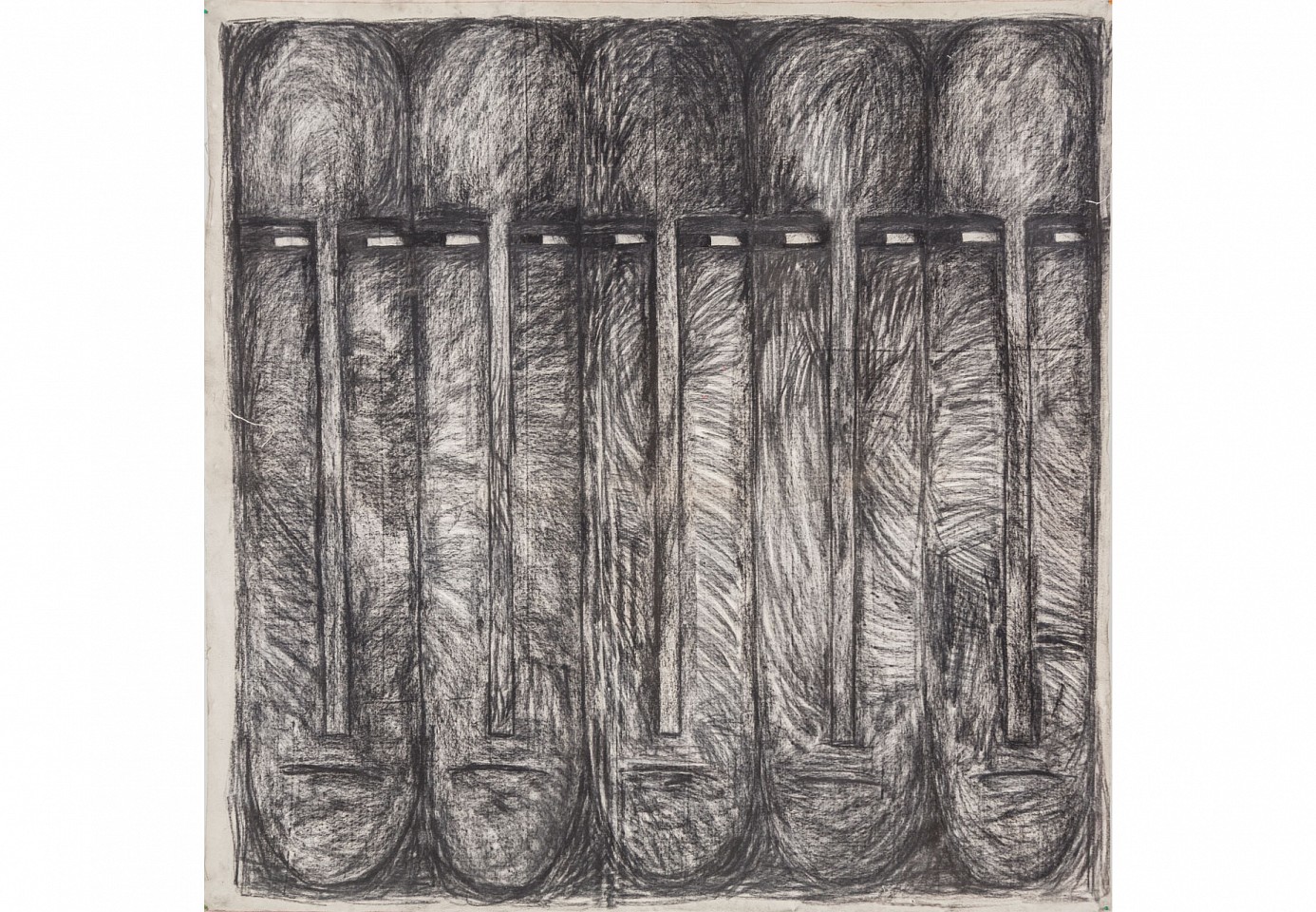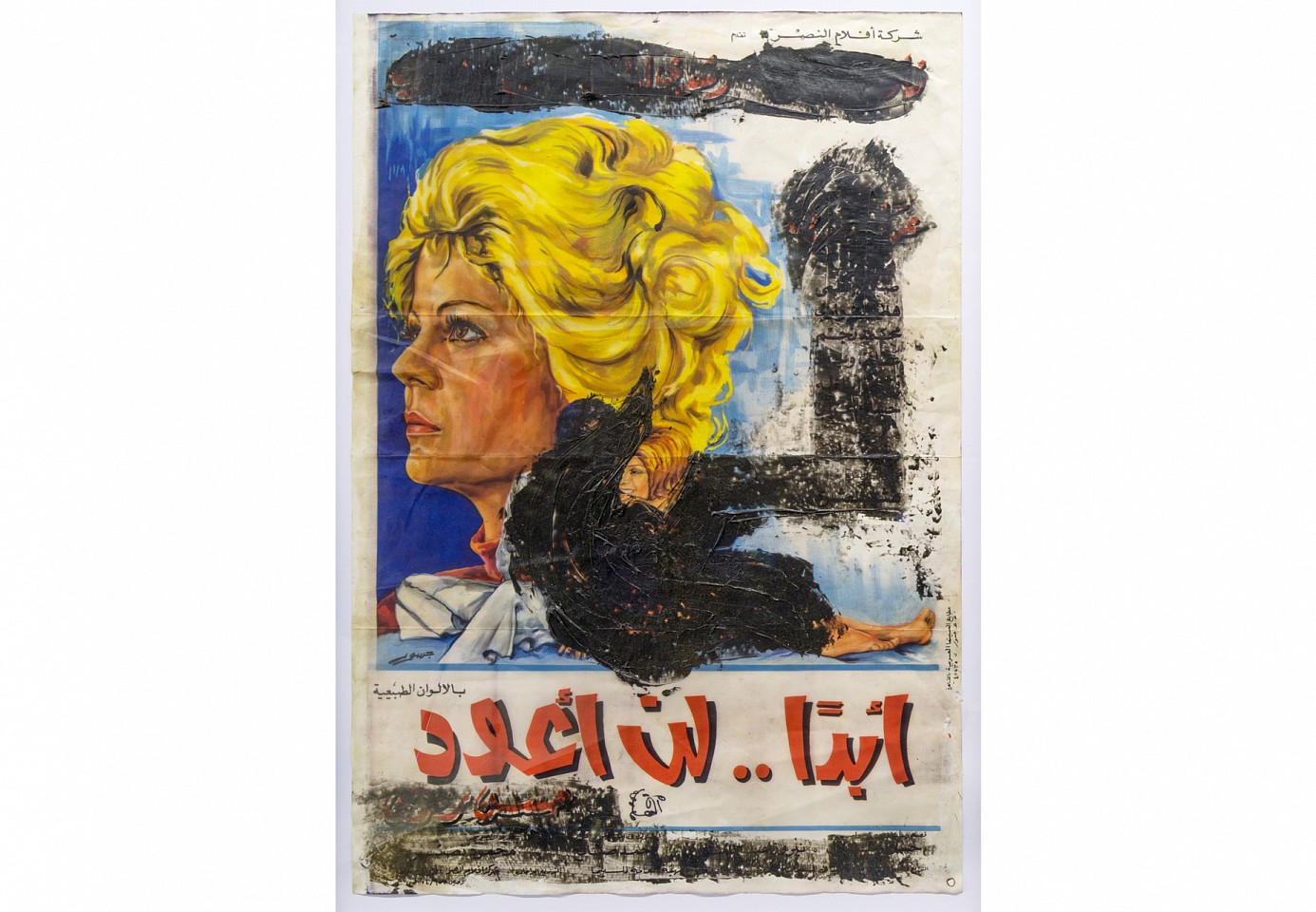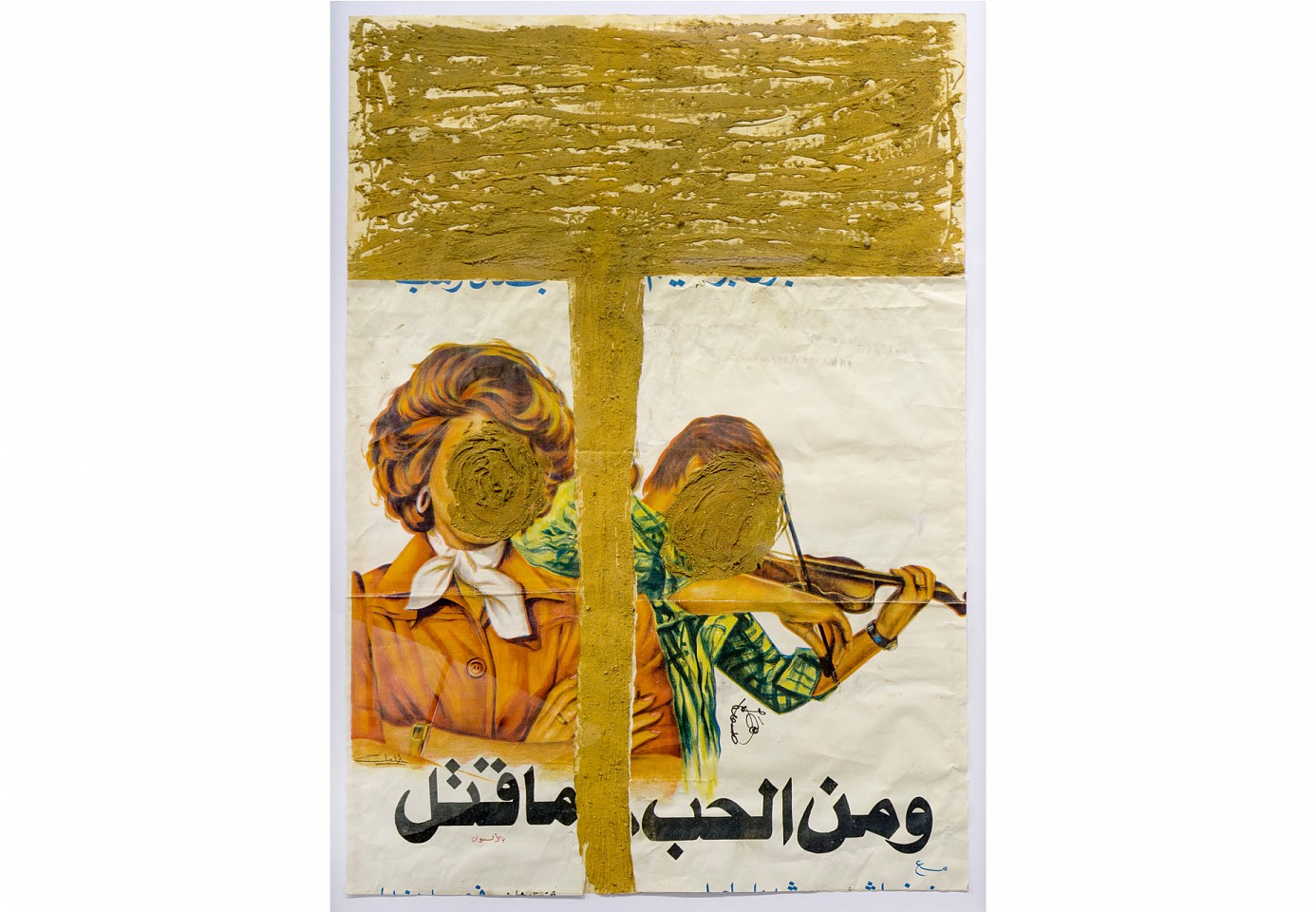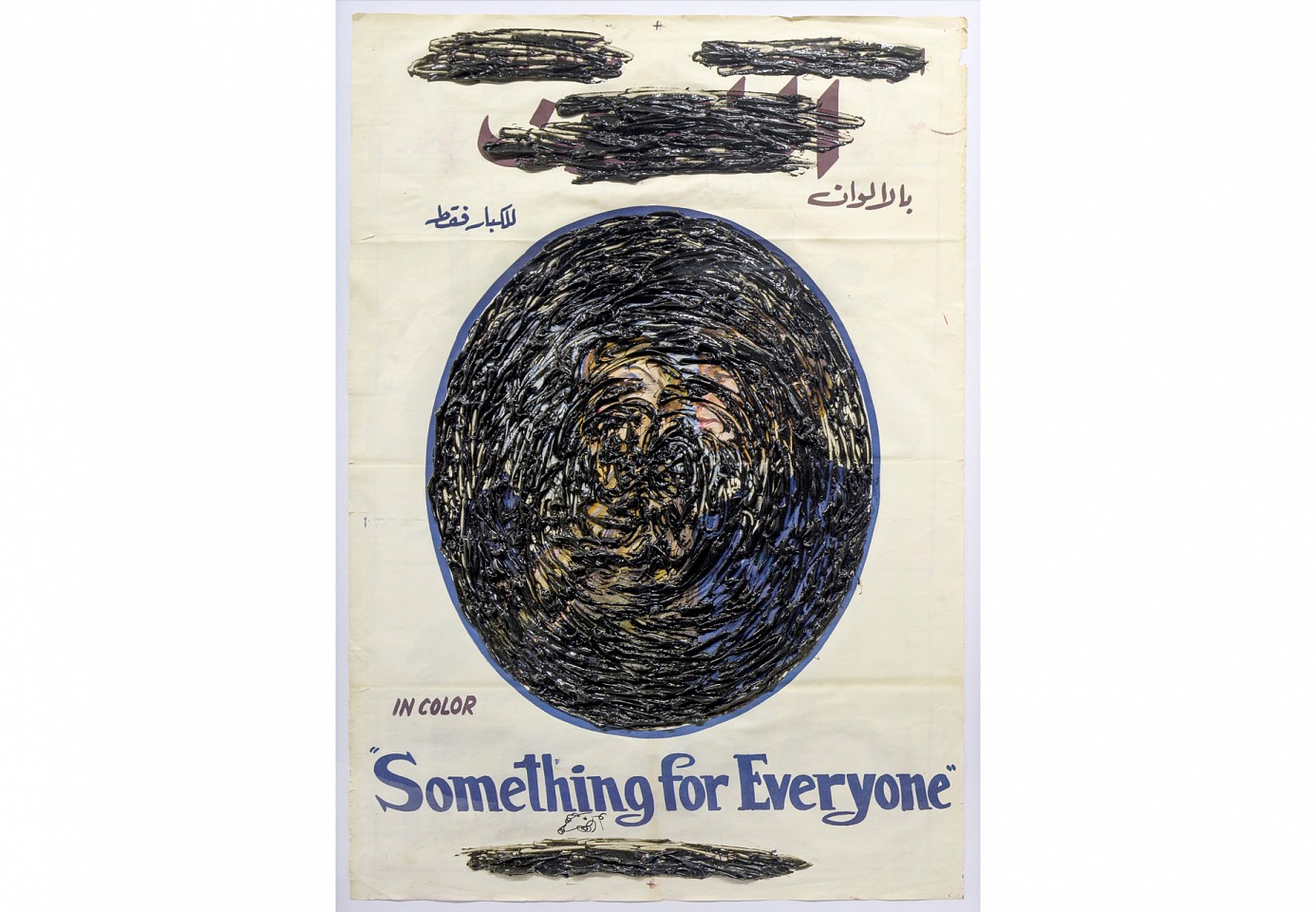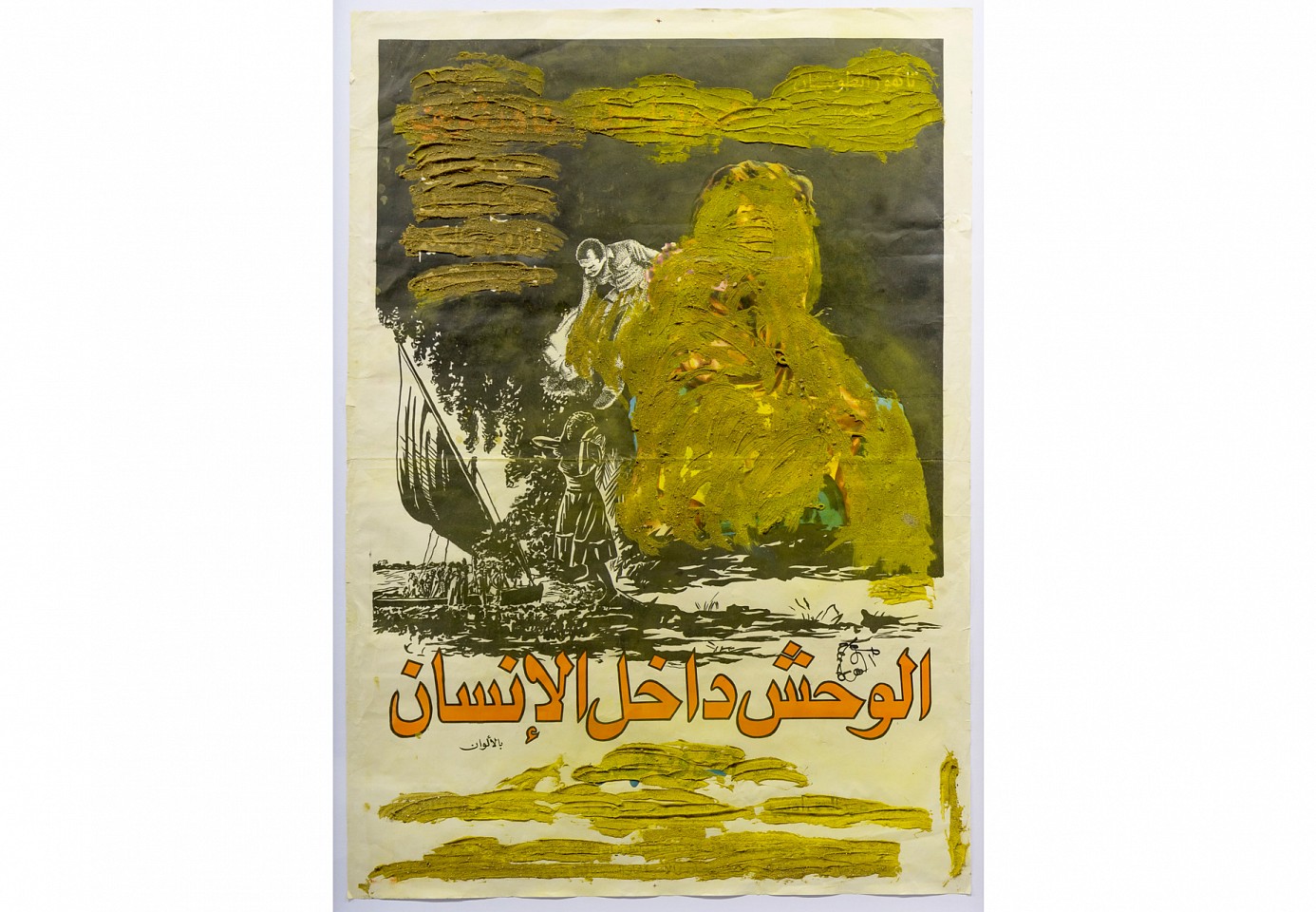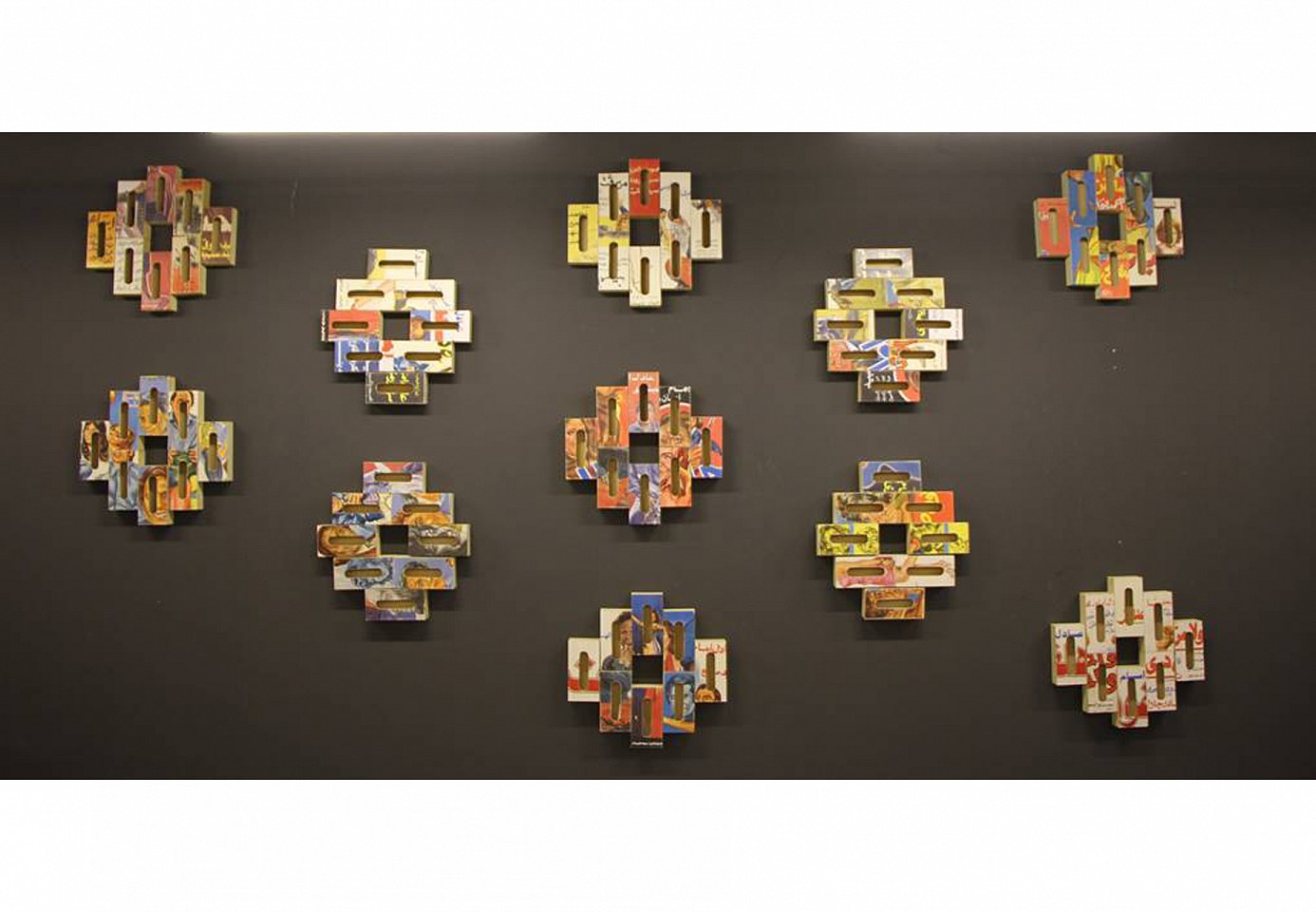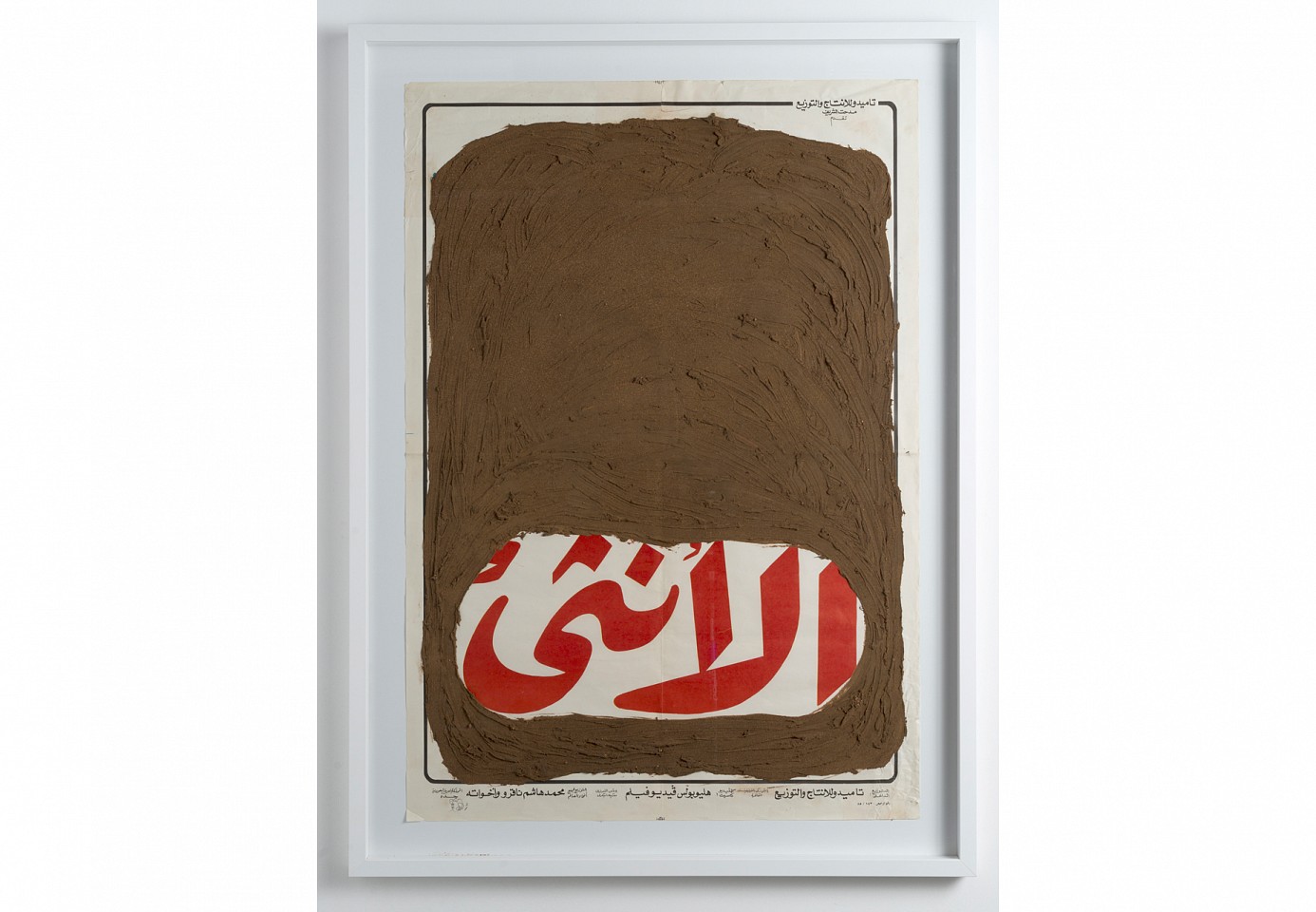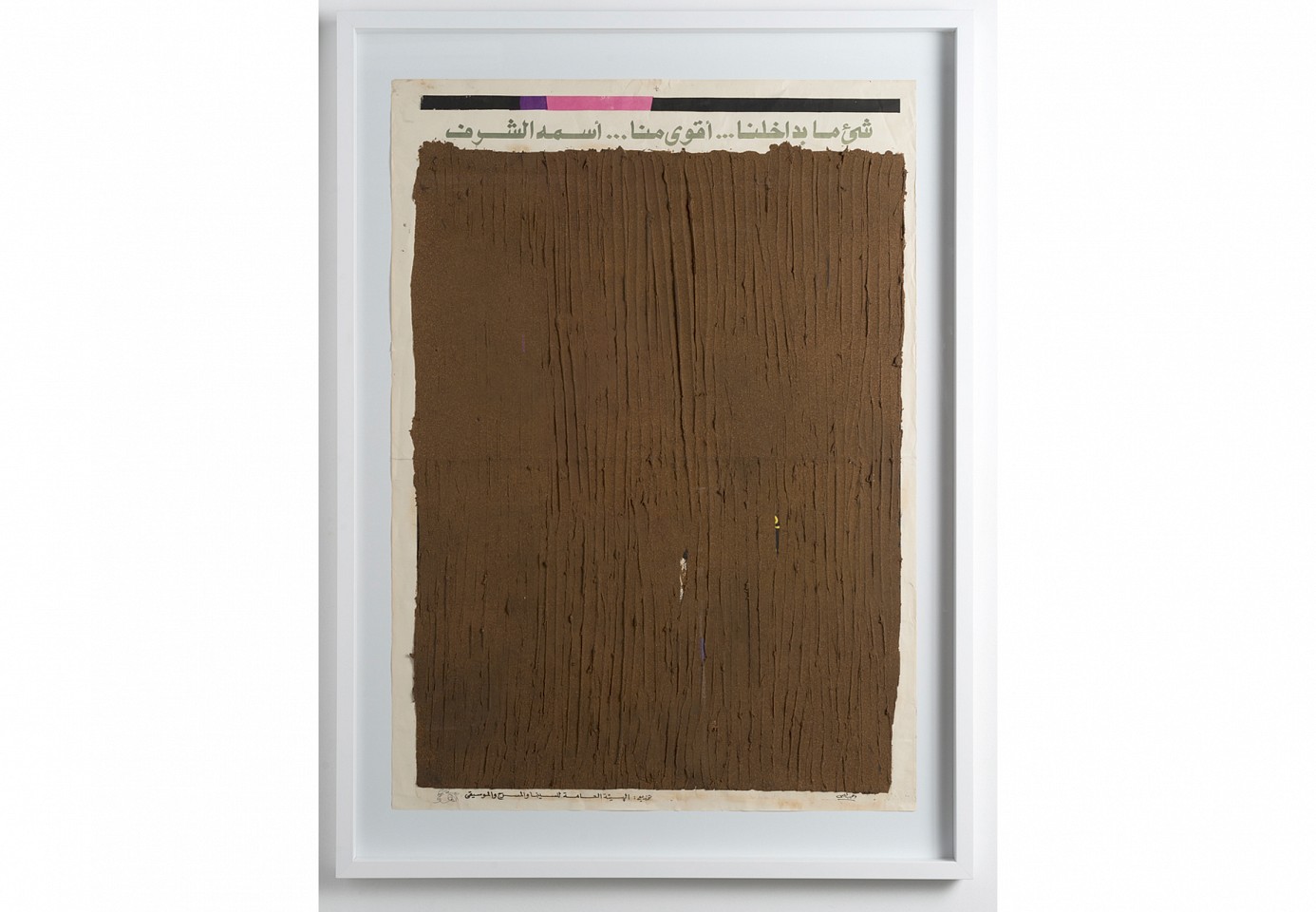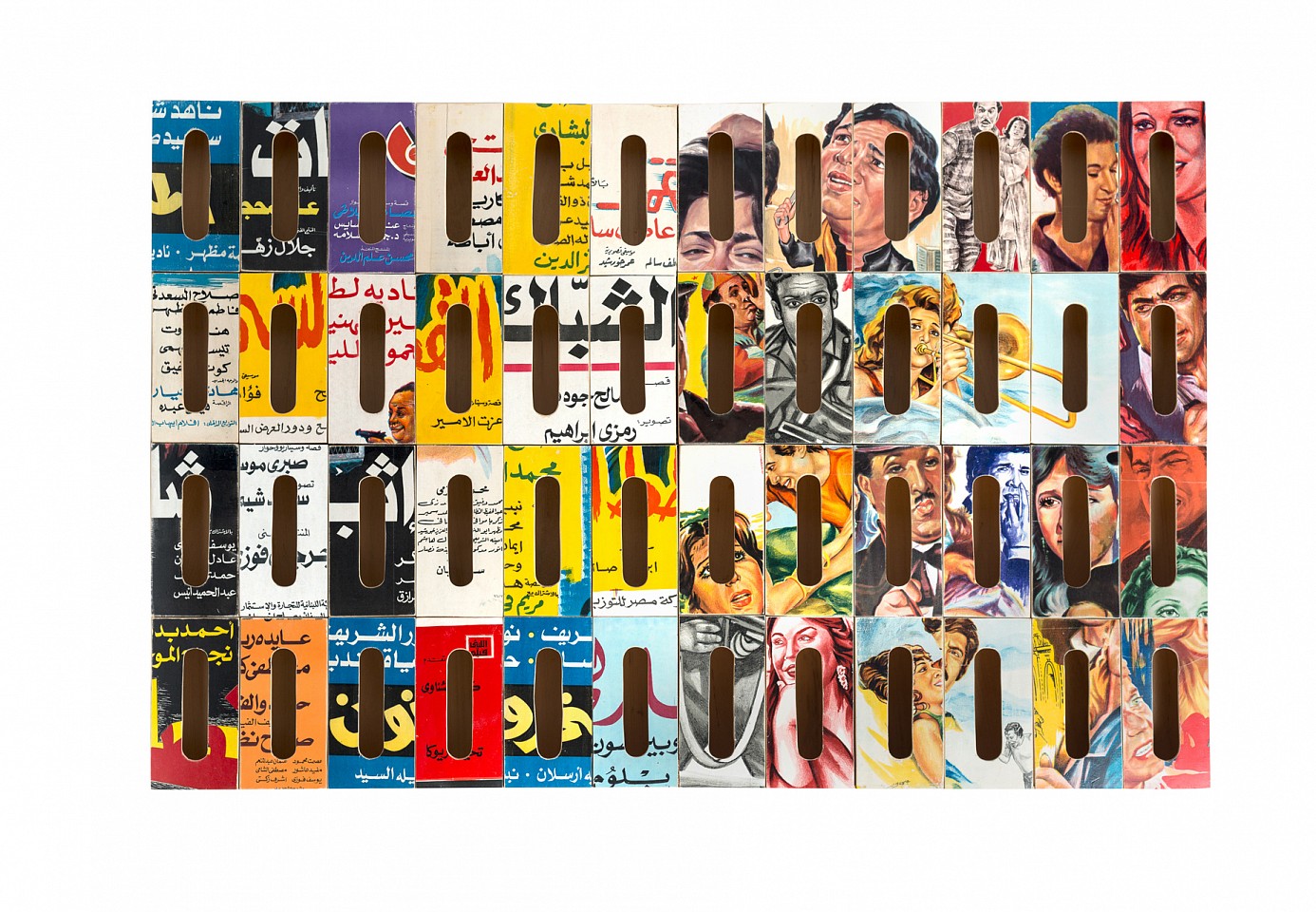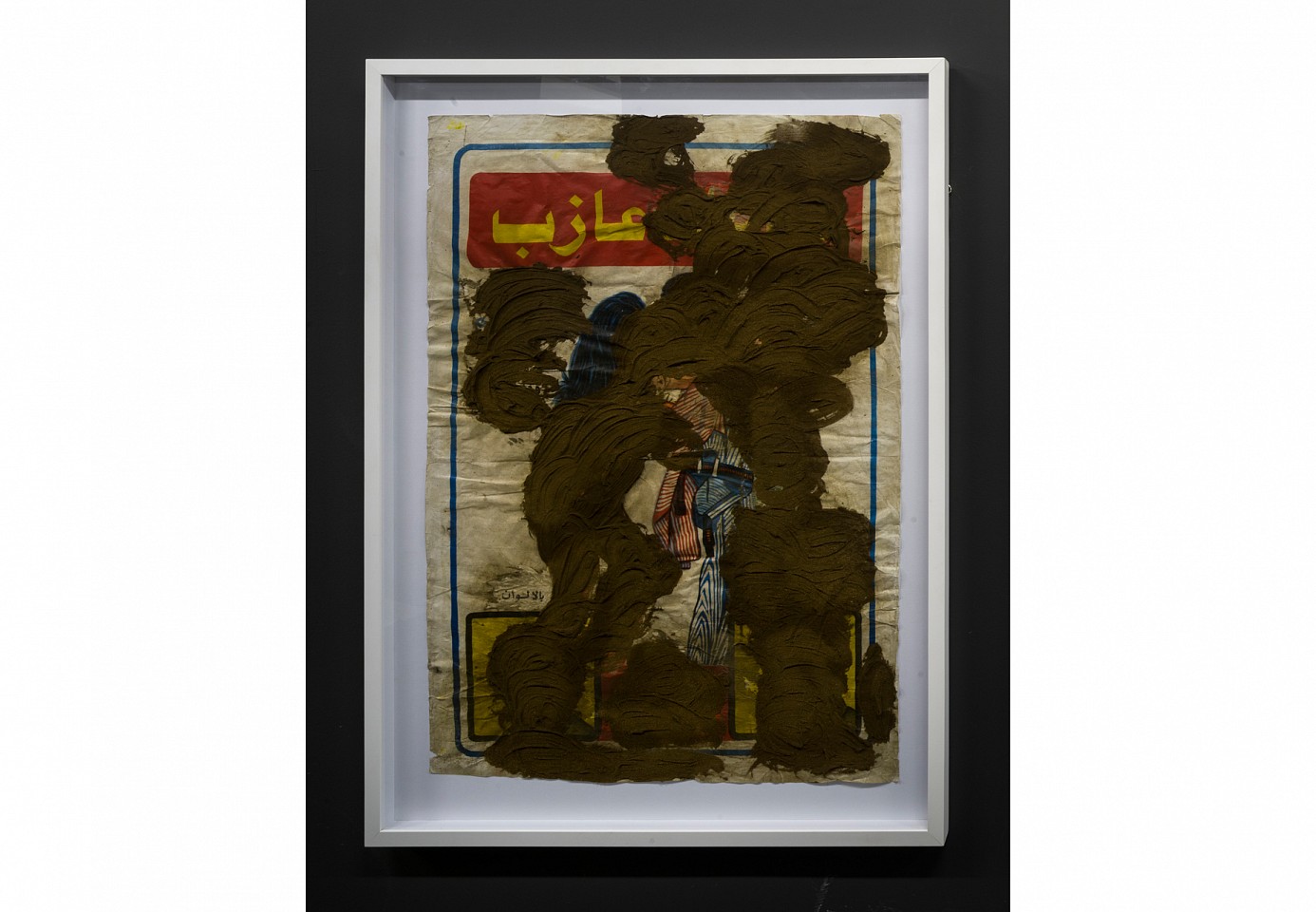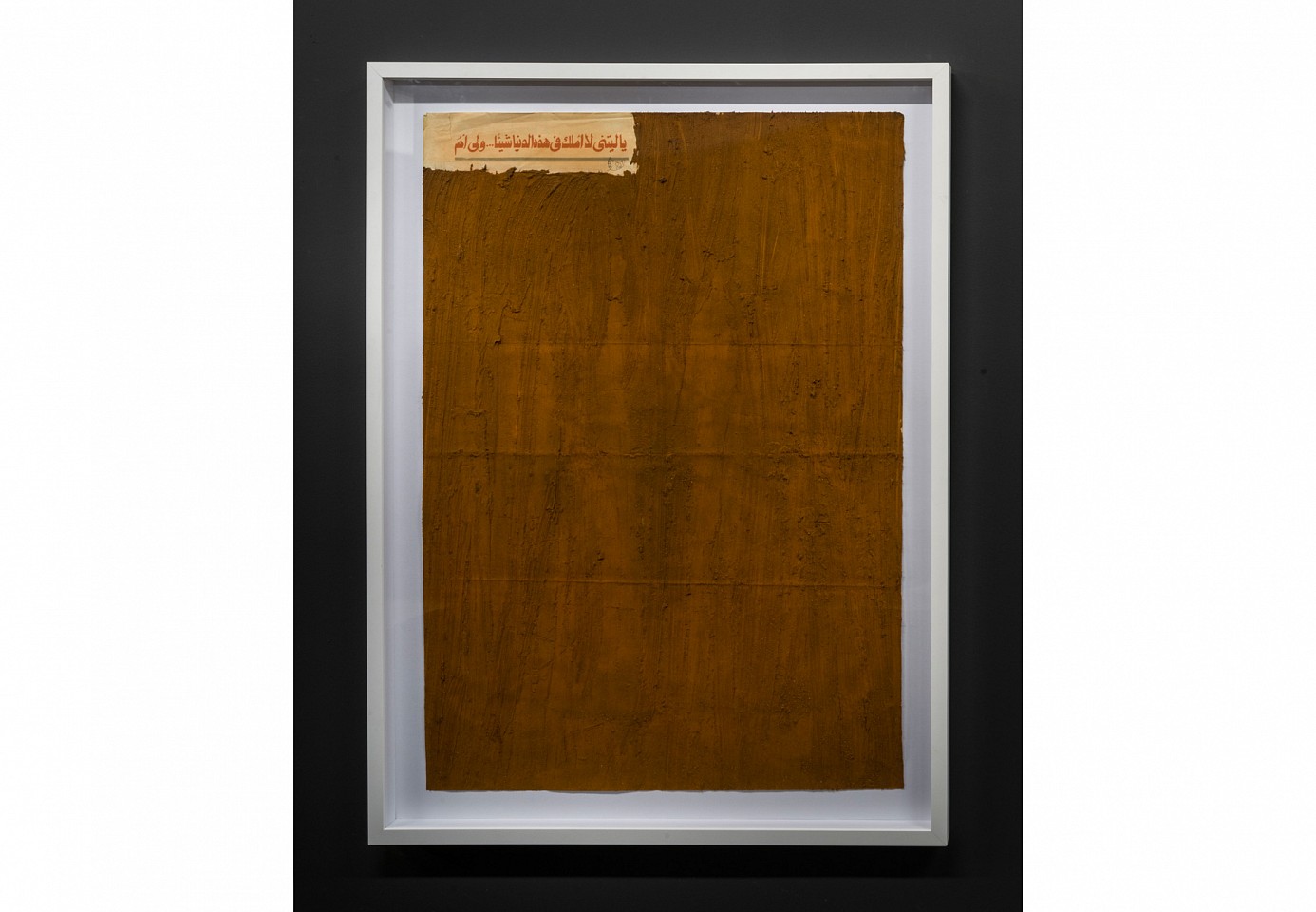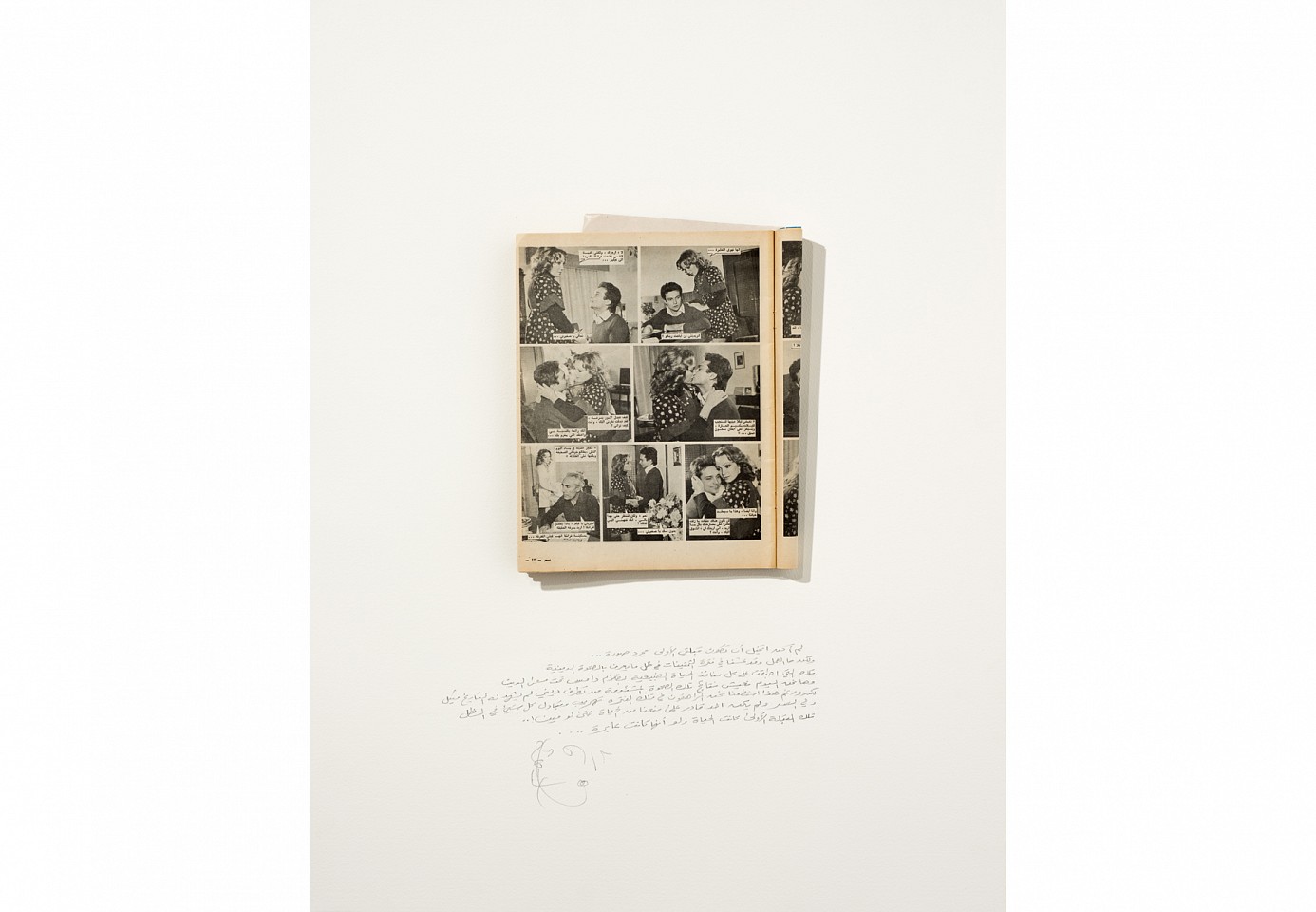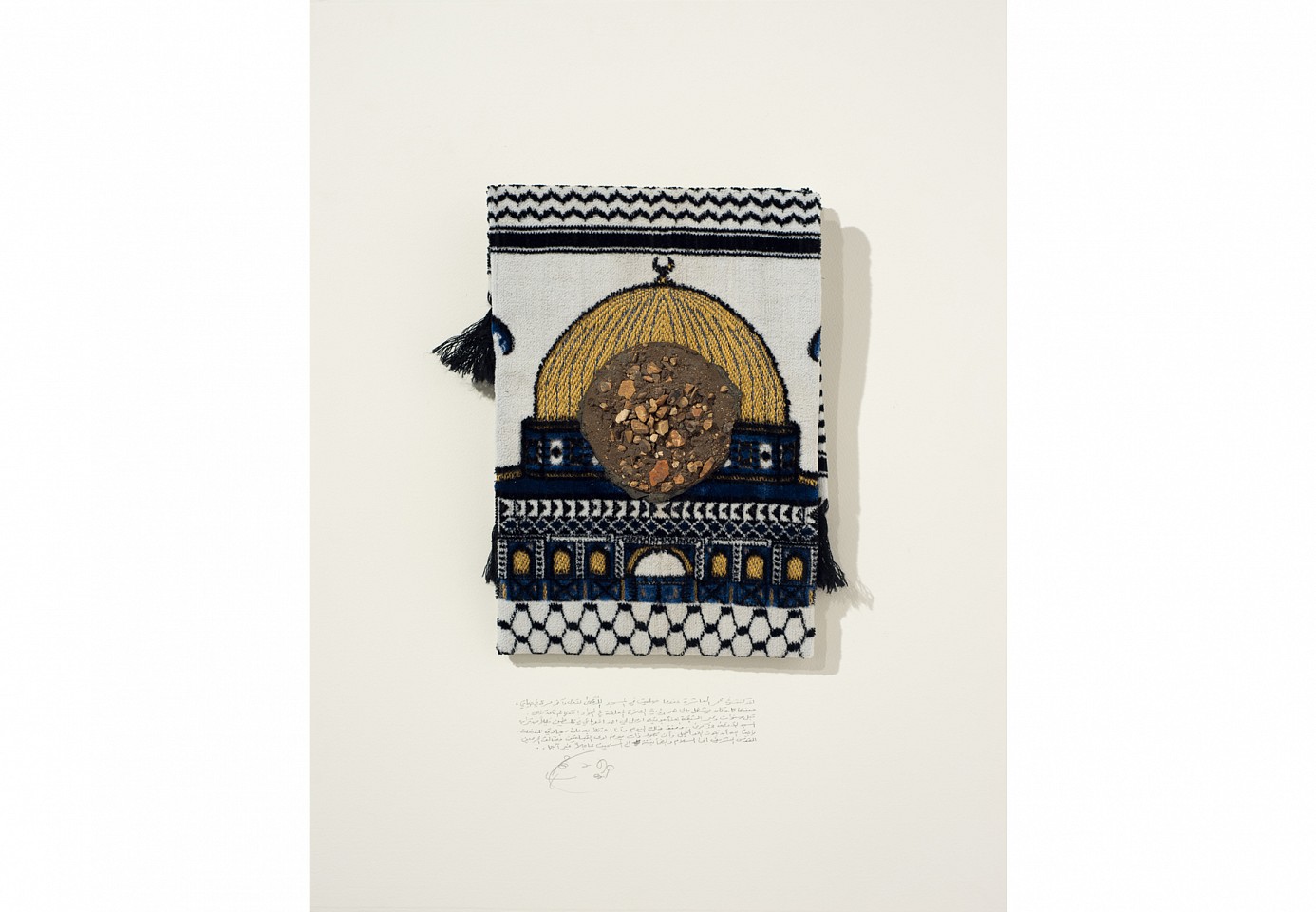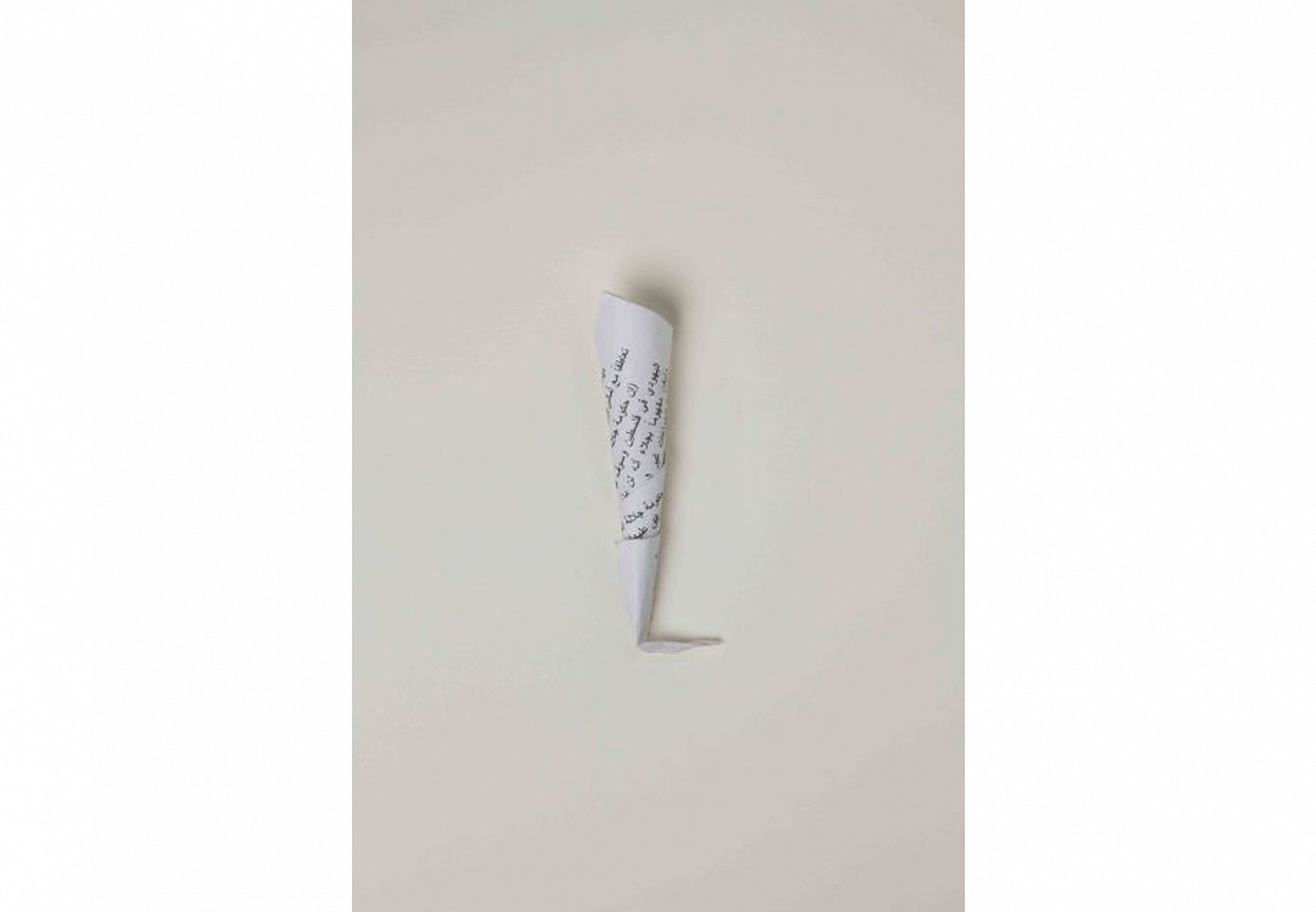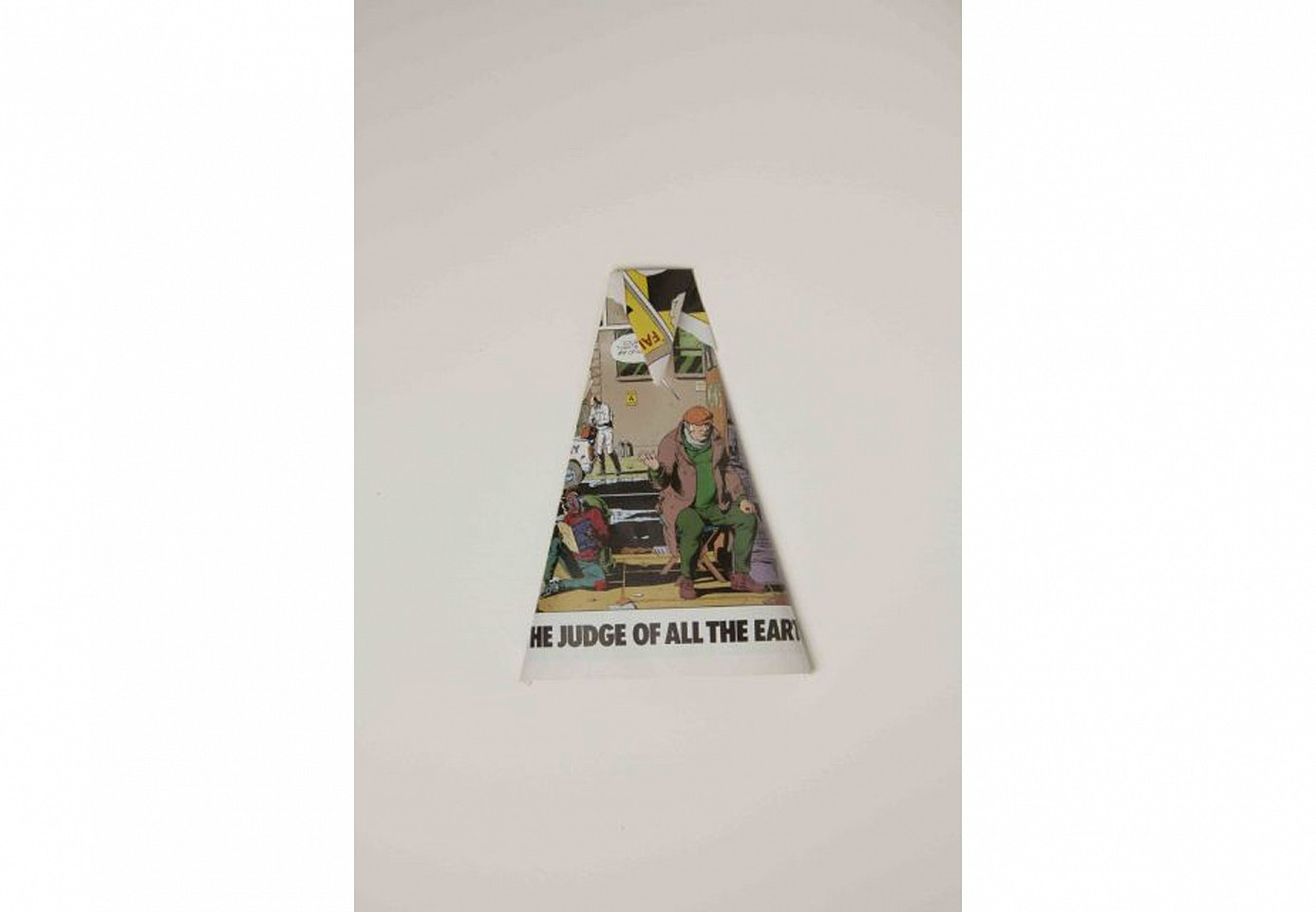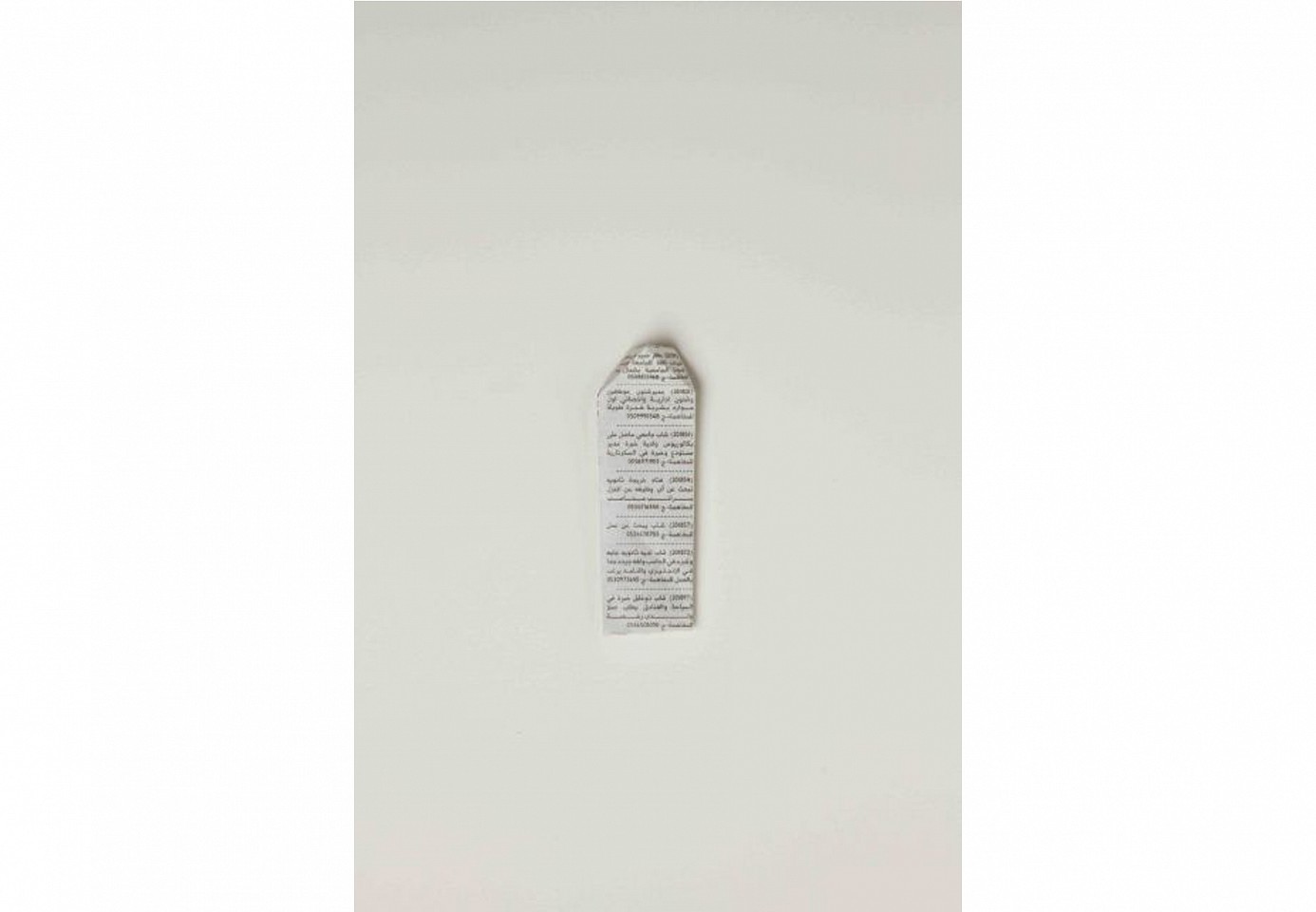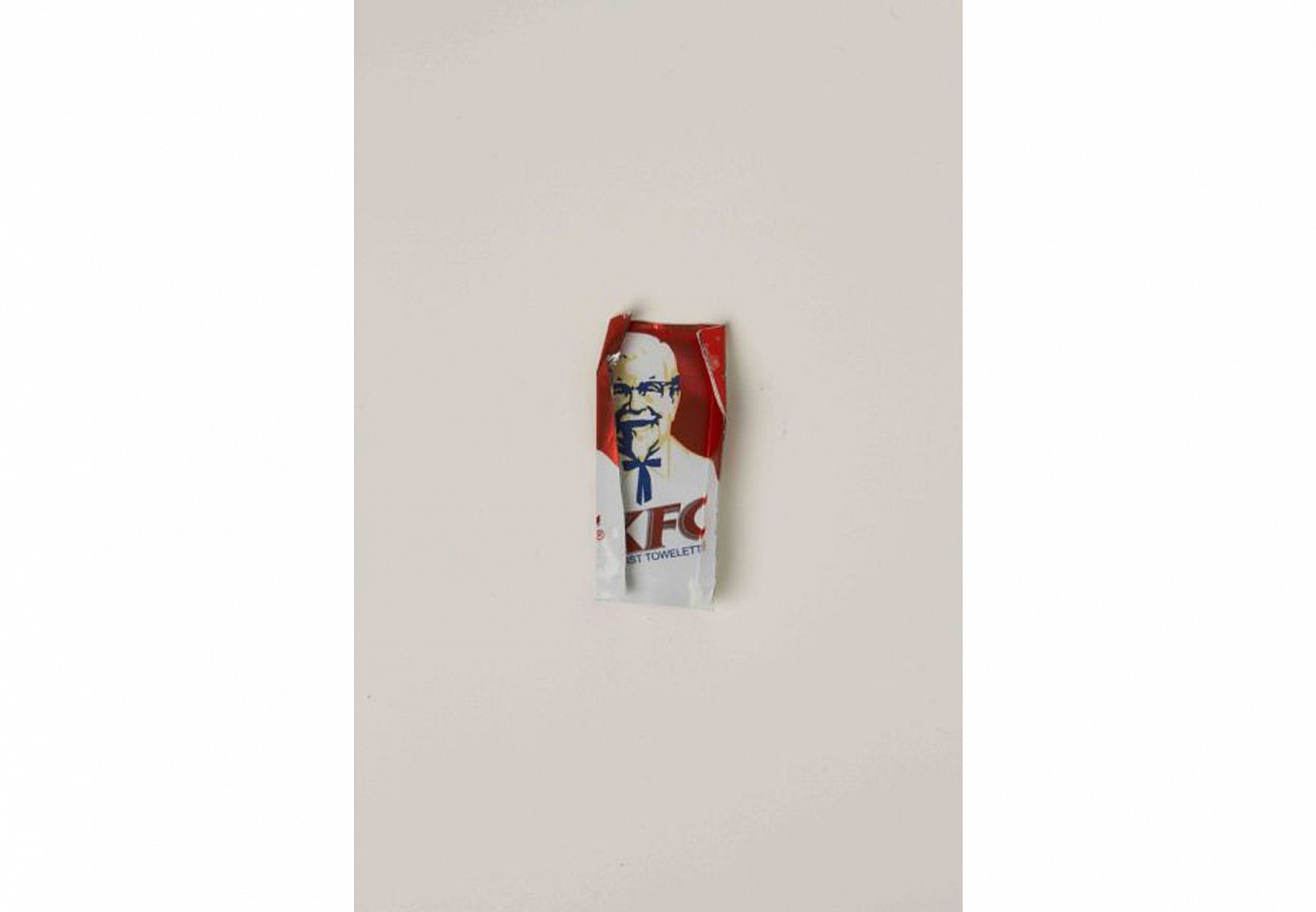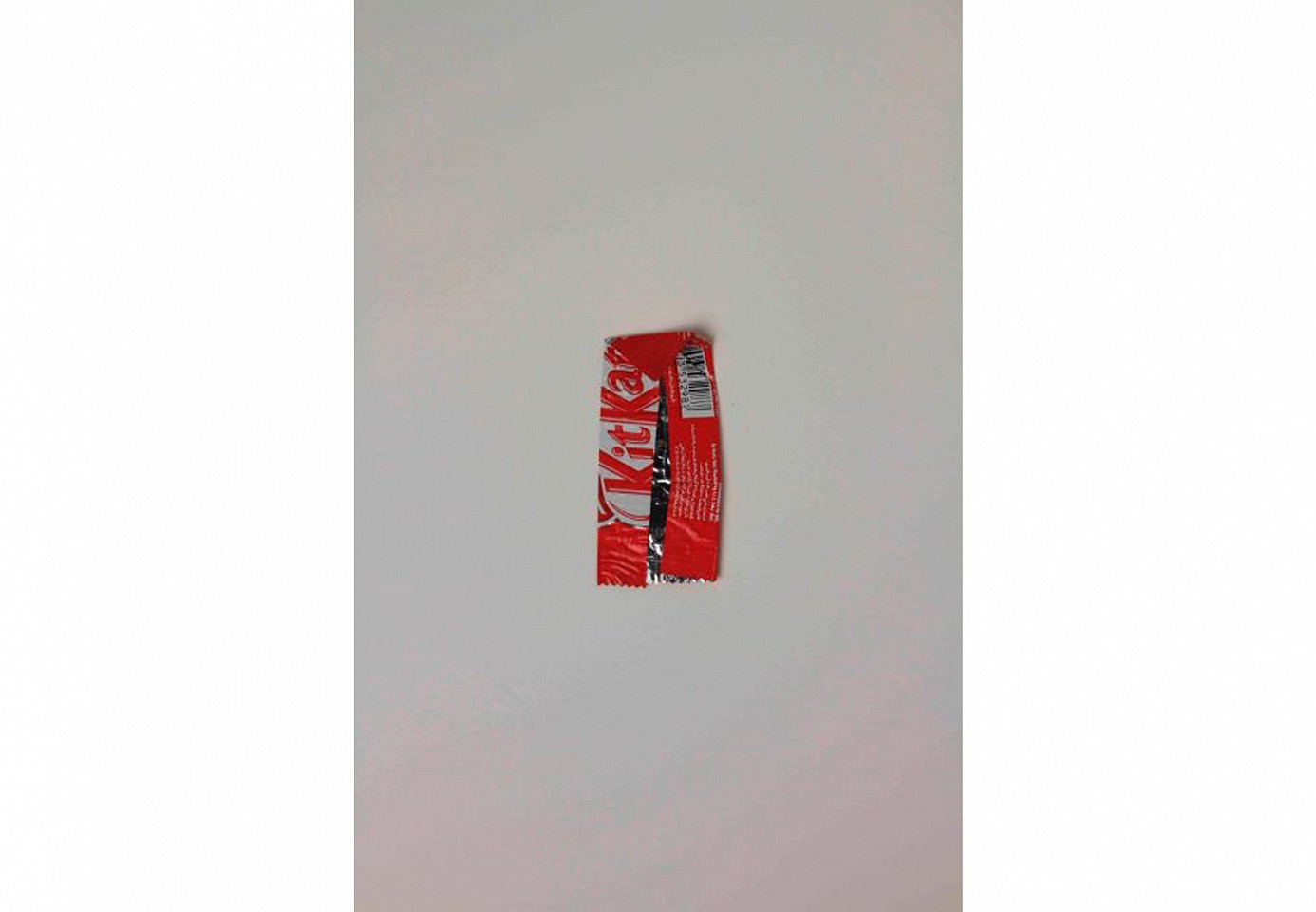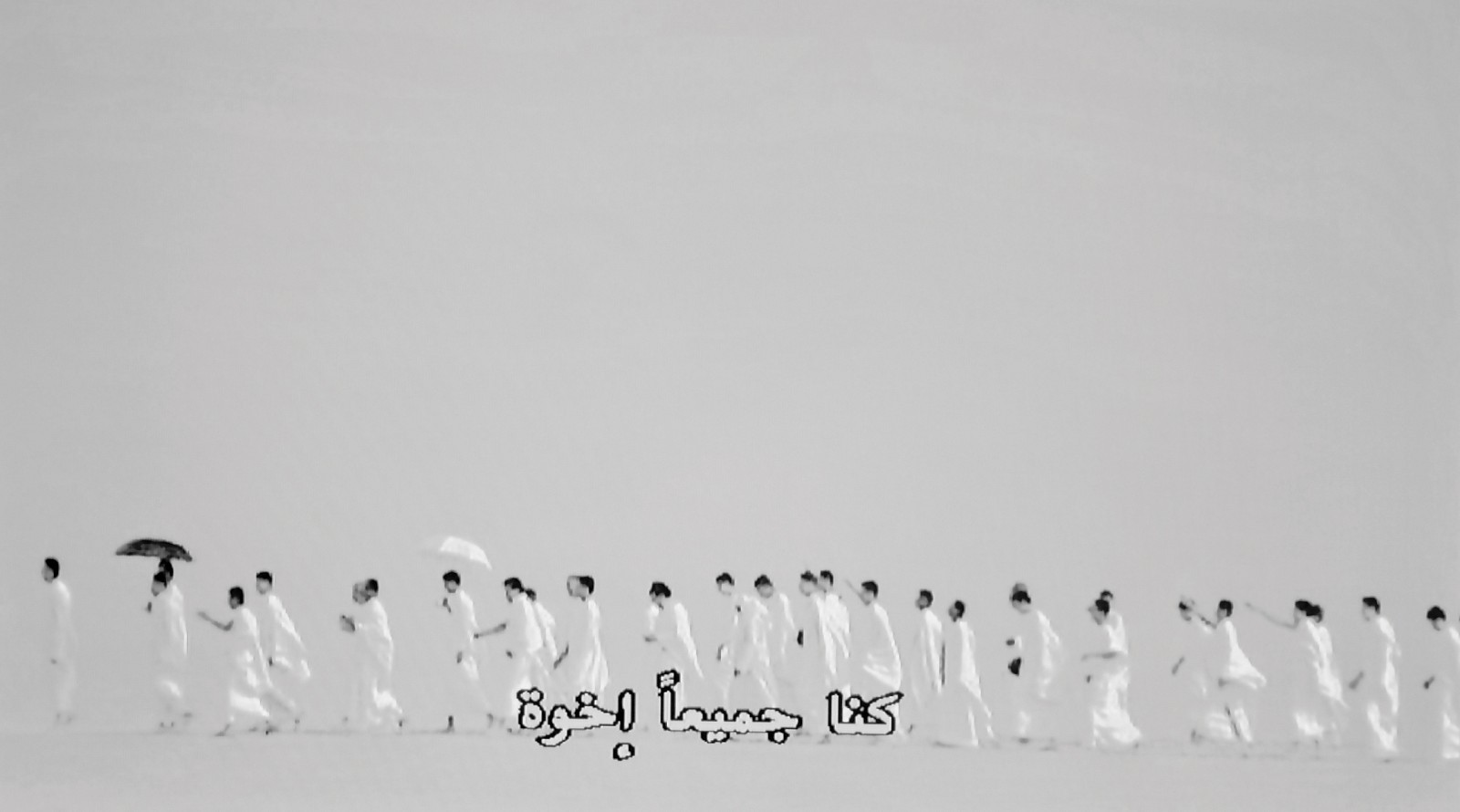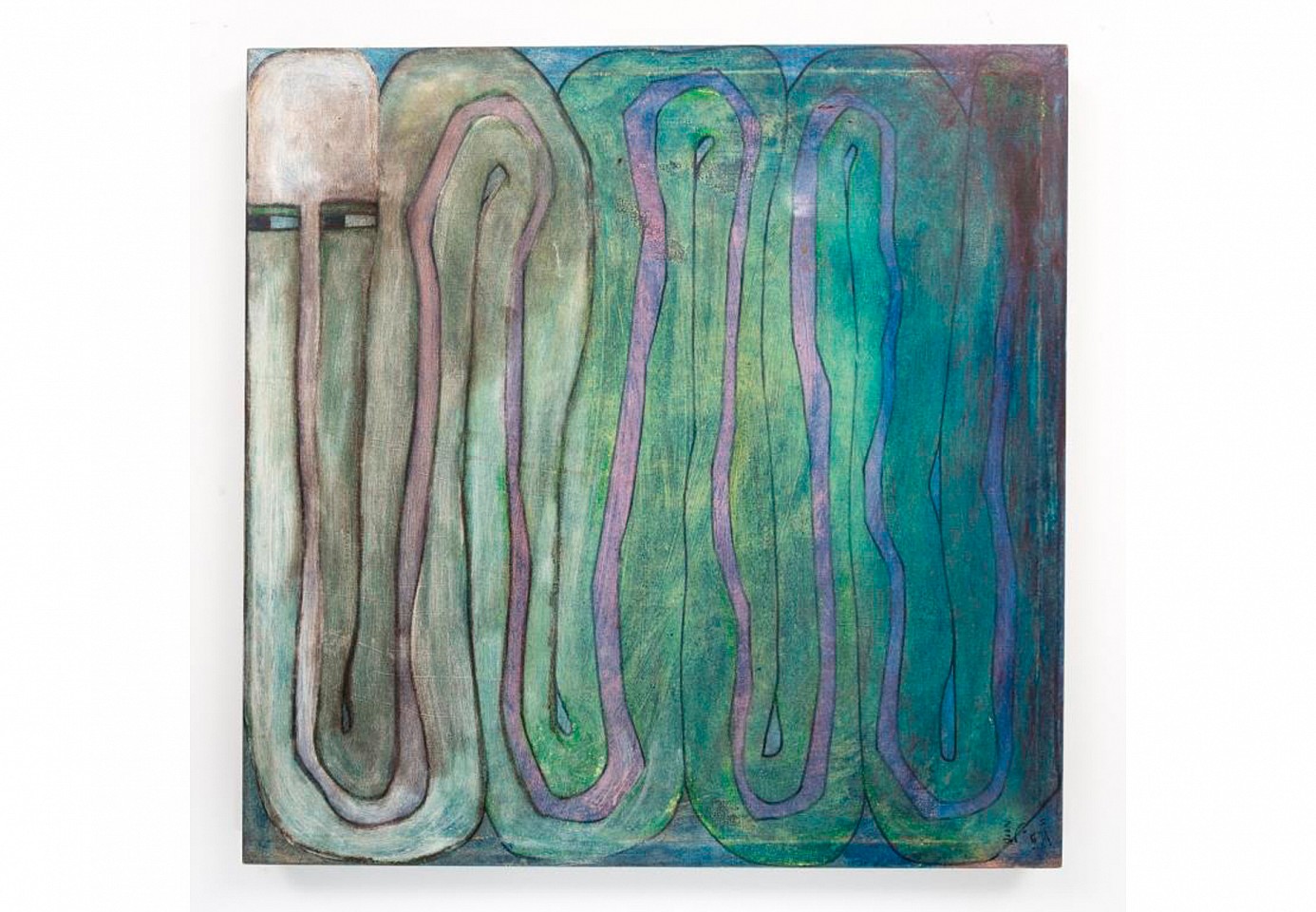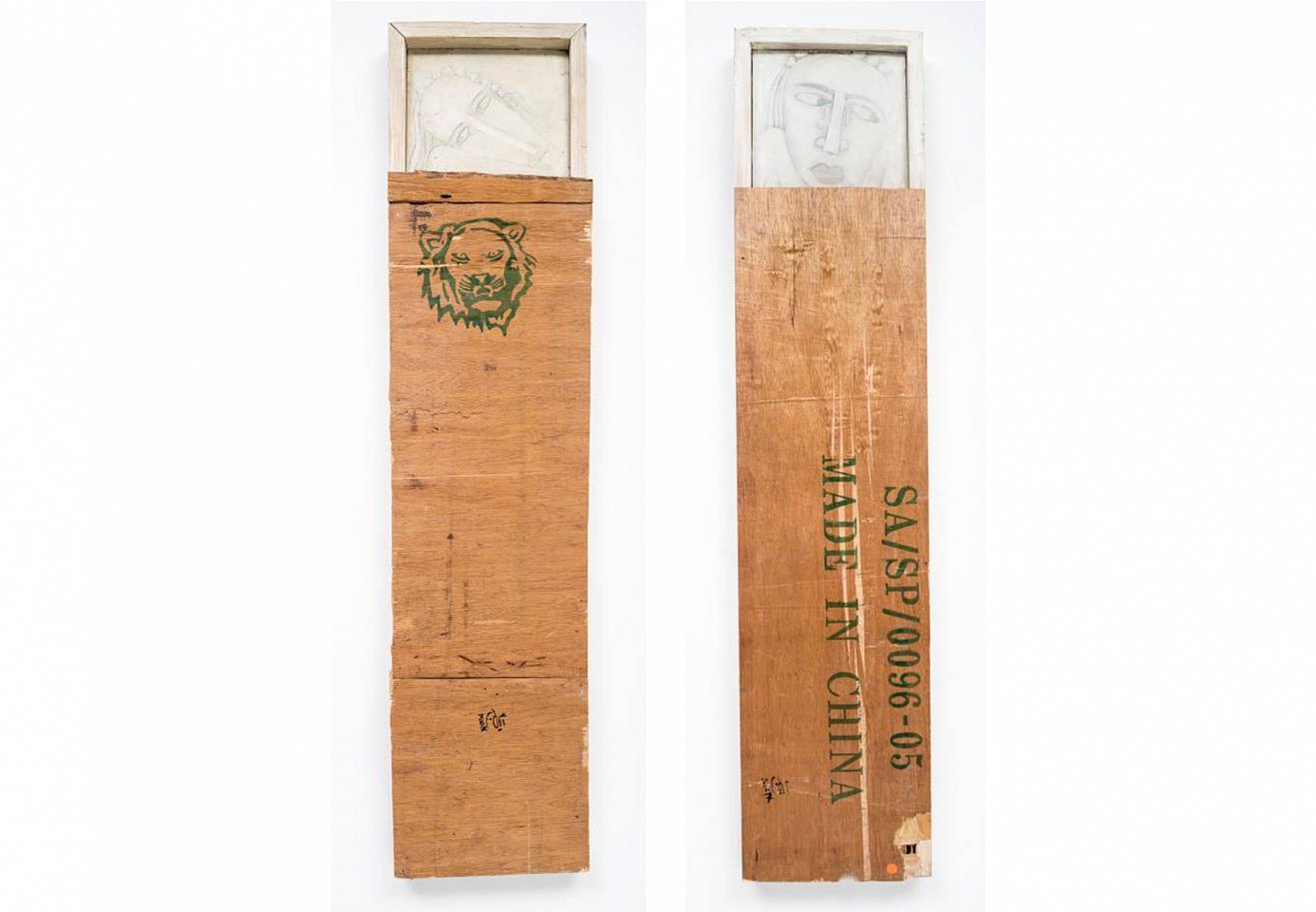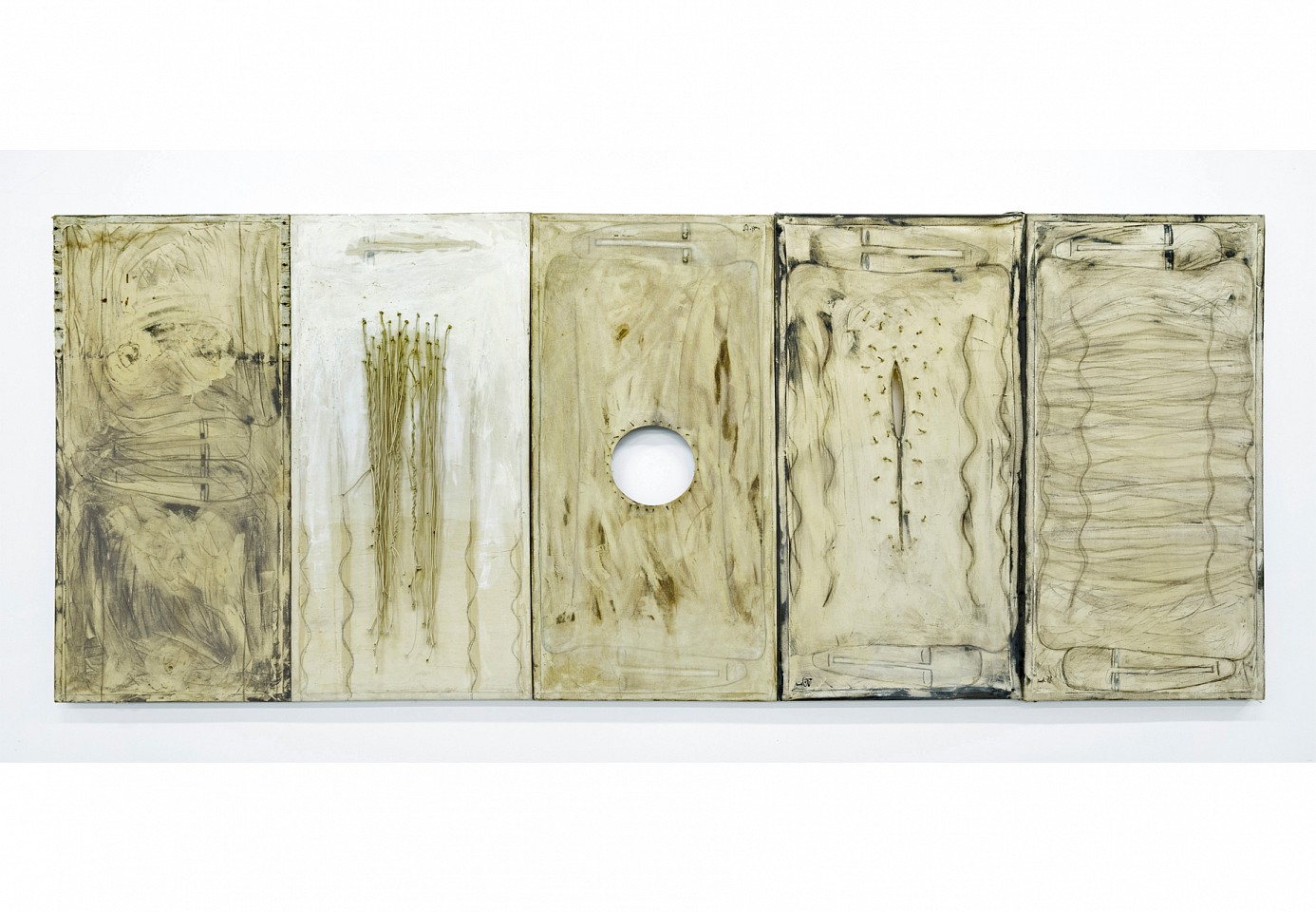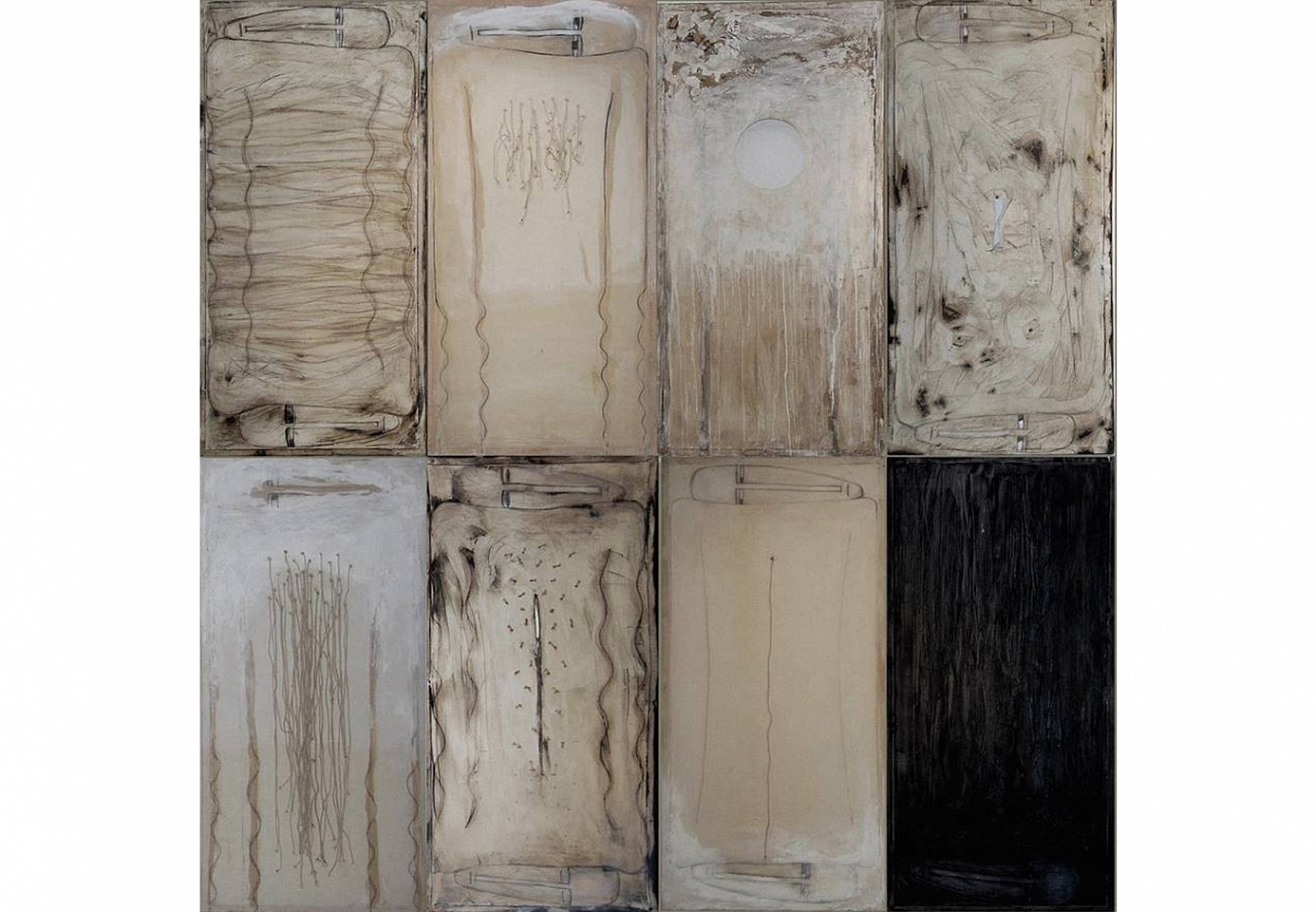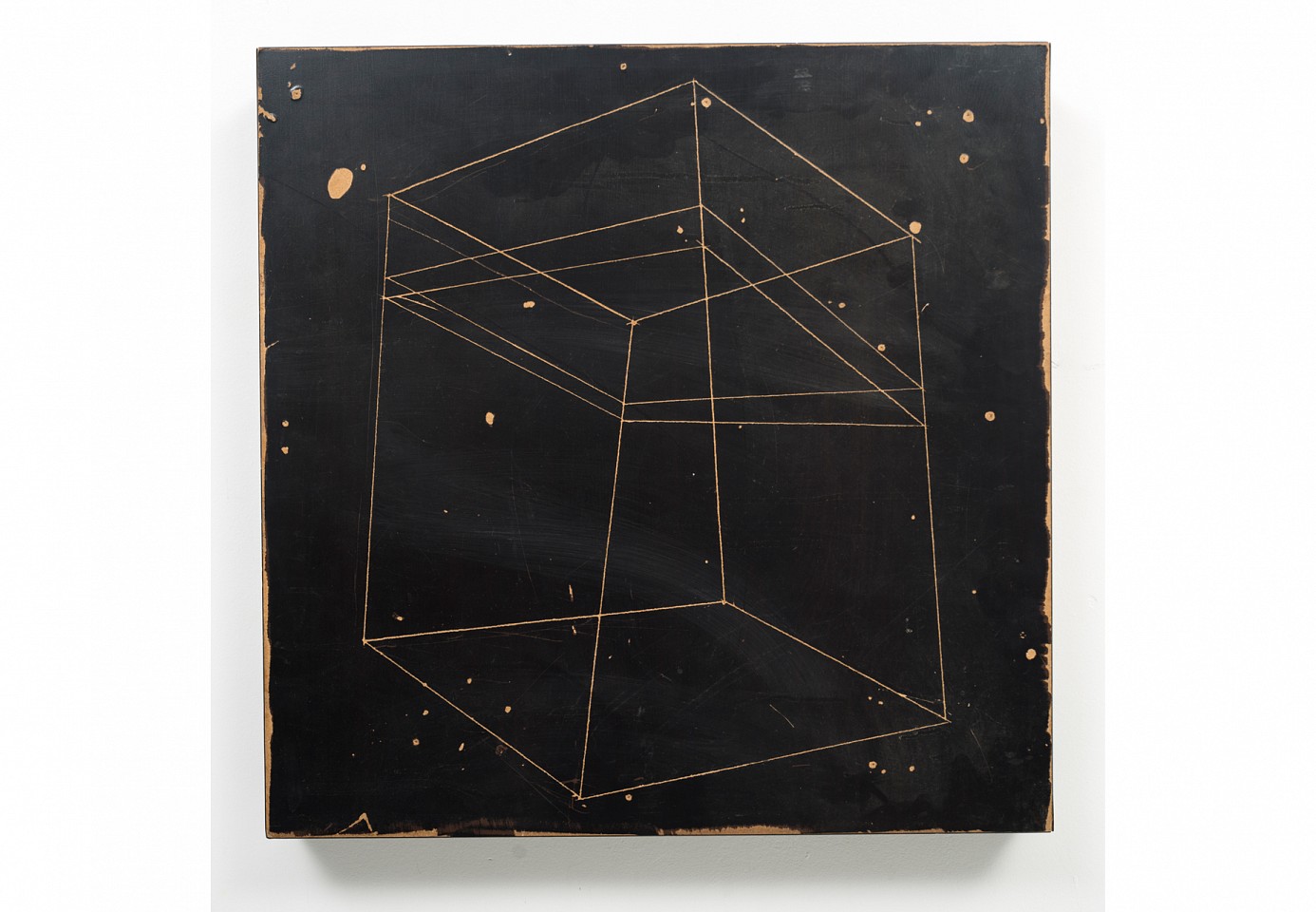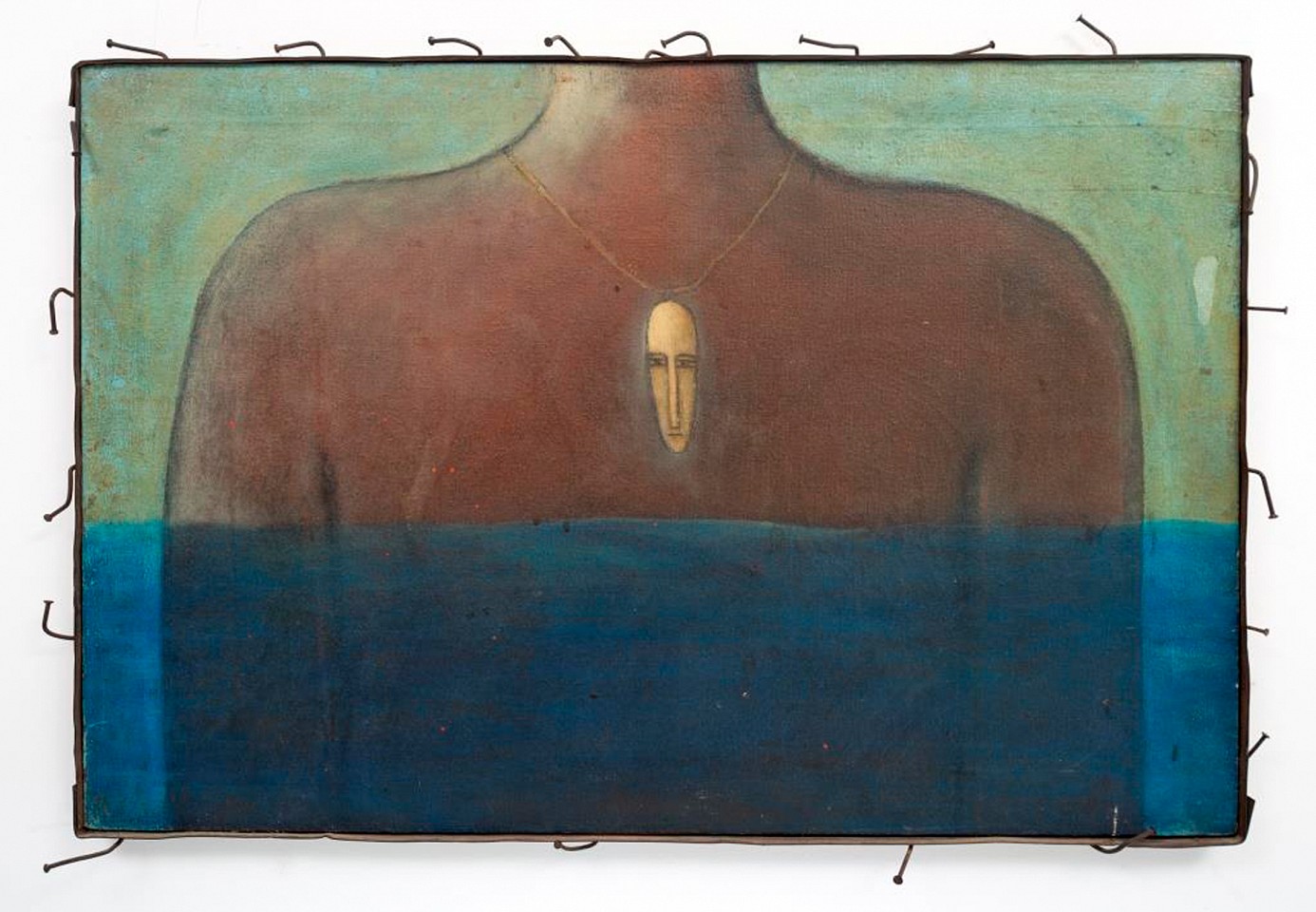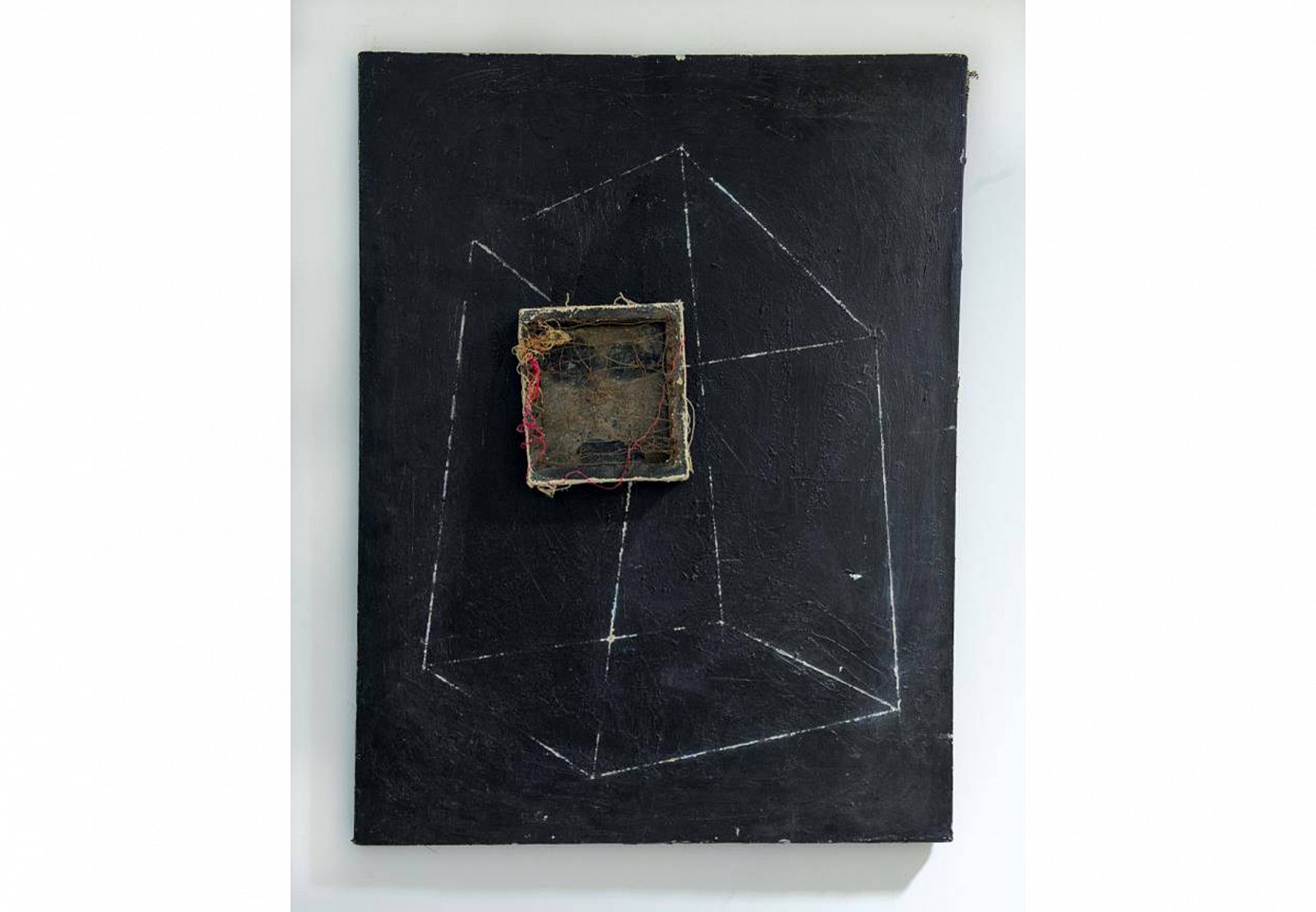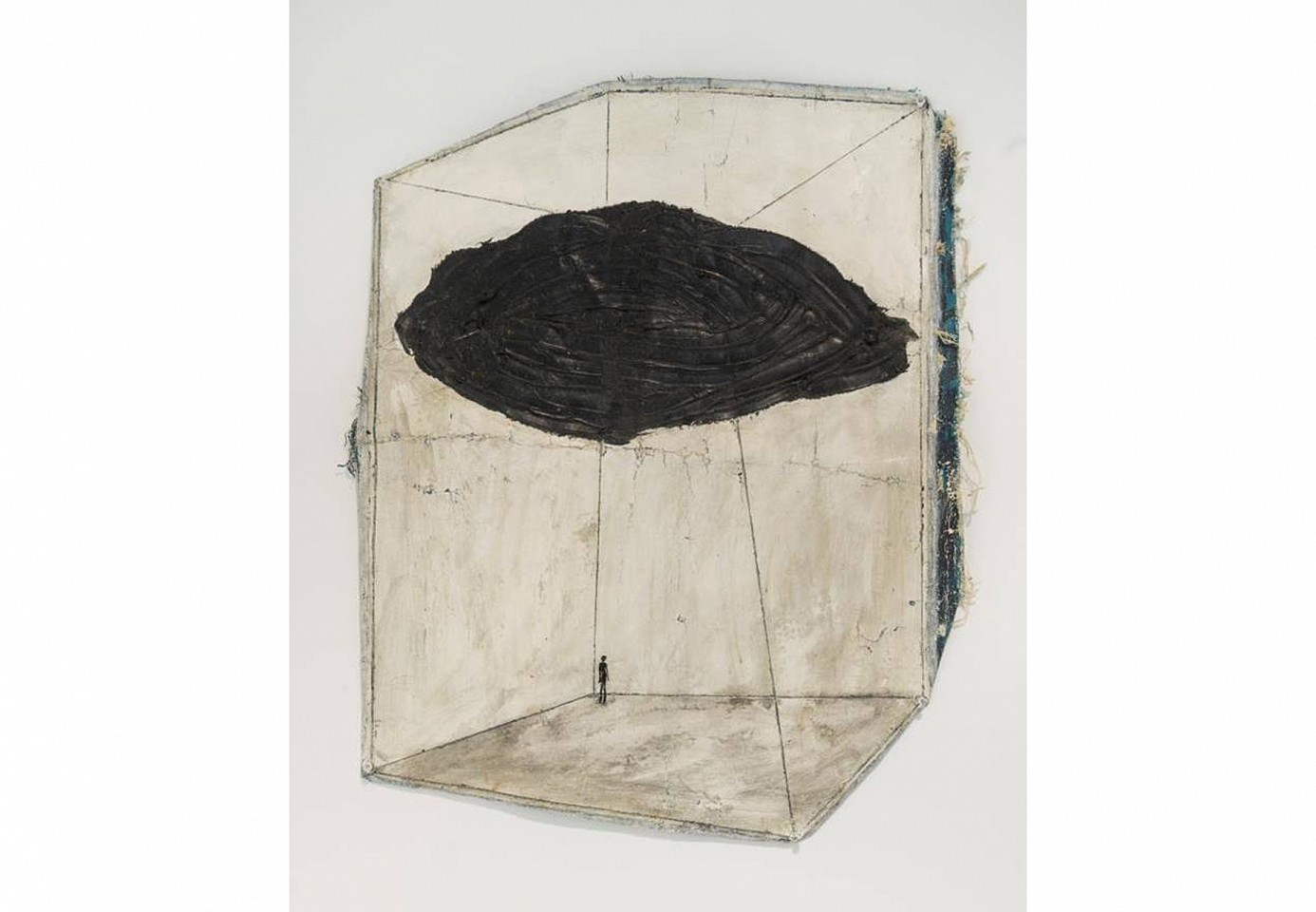Ayman Yossri Daydban
Ayman Yossri Daydban
The Opening 8 PCS, 2010
RC Print Diasec mounted on Dibond
26 x 46.5 cm (10 1/4 x 18 1/4 in.)
From the series Subtitles, Edition Size: 3 + 1 AP
AYD0250
Ayman Yossri Daydban
Thuma Tatawar El Amr, 2009
RC Print Diasec mounted on Dibond
71 x 102 cm (28 x 40 1/8 in.)
From the series Subtitles, Edition of 3 + 1 AP
AYD0175
Ayman Yossri Daydban
Abeed Al Manazil [The House Negro], 2011
Fujicolor Crystal Archive Print
26 x 51 cm each; 8 pieces
From the Subtitle series Edition of 3 + 1 AP
AYD0315
Ayman Yossri Daydban
Hatha Thanbi, 2010
RC Print Diasec mounted on Dibond
53 x 93 cm (20 7/8 x 36 5/8 in.)
From the series Subtitles Edition of 3 + 1 AP
AYD0287
Ayman Yossri Daydban
Oohh, 2009
C-Type mounted on Aluminum
42 x 72 cm (16 1/2 x 28 3/8 in.)
From the series Subtitles Edition Size: 3 + 1 AP
AYD0190
Ayman Yossri Daydban
Love Me, Love Me Not, 2010
Lenticular Imaging
62 x 110 cm (24 3/8 x 43 1/4 in.)
From the series Subtitles Edition of 3 + 1 AP
AYD0230
Ayman Yossri Daydban
Kunna Sho'oban, 2010
Lightbox
87 x 155 cm (34 1/4 x 61 in.)
From Subtitles series, Edition of 3+1 AP, Acquired by The British Museum, London
AYD0311
Ayman Yossri Daydban
Kunna Jameean Ekhwa, 2010
Lightbox
87 x 155 cm (34 1/4 x 61 in.)
From Subtitles series, Edition of 3+1 AP, Acquired by The British Museum, London
AYD0298
Ayman Yossri Daydban
Kayfa Kana Ma'aki, 2010
C-Type mounted on Aluminum
42 x 72 cm (16 1/2 x 28 3/8 in.)
From the series Subtitles Edition of 5 + 1 AP
AYD0261
Ayman Yossri Daydban
It Will Not Be An Easy Matter, 2012
Photographic Print on Archival Paper
62 x 110 cm (24 3/8 x 43 1/4 in.)
From Subtitle series, Edition of 3
AYD0321
Ayman Yossri Daydban
Abyssinia, 2012
Metallic lambda print mounted on dibond
210 x 146 cm (82 5/8 x 57 1/2 in.)
From the sub-series Dialogues of Subtitles series, Variation 2
AYD0405
Ayman Yossri Daydban
Salahuddin, 2010
Mixed Media on Canvas
200 x 200 cm (78 3/4 x 78 3/4 in.)
From the series 'Asmaa'
AYD0324
Ayman Yossri Daydban
The Bell, 2012
Stainless steel
AYD0404
Ayman Yossri Daydban
Ra'i from Ihramat, 2012
Stretched Ihram Fabric over Wooden Frame
240 x 480 cm (94 1/2 x 189 in.)
AYD0396
Ayman Yossri Daydban
White Buffalo from the seires 'Maharem', 2010
B&W Print on Wooden Tissue Box
104 x 270 cm (41 x 106 1/4 in.)
3
AYD0340
Ayman Yossri Daydban
Pepsi, 2011
100% Cotton Acid Free Paper
77 x 56 cm (30 3/8 x 22 in.)
AYD0422
Ayman Yossri Daydban
Distortion 03, 2011
Stainless steel
139 x 49 cm (54 3/4 x 19 1/4 in.)
AYD0435
Ayman Yossri Daydban
Distortion 04, 2011
Stainless steel
135 x 42 cm (53 1/8 x 16 1/2 in.)
AYD0436
Ayman Yossri Daydban
Reflections 06, 2011
Stainless steel
206 x 41.5 cm (81 1/8 x 16 3/8 in.)
AYD0443
Ayman Yossri Daydban
Reflections 16, 2012
Stainless steel
220 x 61 cm (86 5/8 x 24 in.)
AYD0448
Ayman Yossri Daydban
White Buffalo, 2014
25 tissue boxes
182.5 x 68 x 8 cm (71 13/16 x 26 3/4 x 3 1/8 in.)
From the Maharem series
AYD0485
Ayman Yossri Daydban
Reclining Flag, 2012
Steel
77 x 51 x 130 cm (30 3/8 x 20 1/8 x 51 1/8 in.)
From Flag series
AYD0457
Ayman Yossri Daydban
Qist, 2011
Strecthed Ihram fabric on wooden frame.
81 x 160 cm (31 7/8 x 63 in.)
AYD0465
Ayman Yossri Daydban
My Mother's First Embroidered Gown, 2014
Red Textile on Peper
77 x 56 cm (30 5/16 x 22 in.)
AYD0010
Ayman Yossri Daydban
Red Flag, 2014
Industrial car paint on hessian onion bag
128 x 145 cm (50 3/8 x 57 1/16 in.)
AYD0506
Ayman Yossri Daydban
Maharem II, 2015
45 Tissue Boxes
138 x 128 cm (54 5/16 x 50 3/8 in.)
AYD0508
Ayman Yossri Daydban
Al Fotowwa, 2018
Oil on Paper (Vintage Poster)
AYD0725
Ayman Yossri Daydban
Take Me Somewhere Nice series, 2018
Video installation
AYD0682
Ayman Yossri Daydban
Untitled, 2018
Oil on Paper (Vintage Poster)
AYD0724
Ayman Yossri Daydban
03 from the Posters series (La Wakta Liddomoo), 2016
Oil on Paper (Vintage Poster)
AYD0615
Ayman Yossri Daydban
08 from the Posters series (Wadaan Ela ALabad), 2016
Oil on Paper (Vintage Poster)
AYD0619
Ayman Yossri Daydban
12 from the Posters series (Alawantagiah), 2016
Oil on Paper (Vintage Poster)
AYD0596
Ayman Yossri Daydban
59 from Maharem series, 2016
Tissue Box
AYD0702
Ayman Yossri Daydban
Daydban 03, 2016
Acrylic on canvas
AYD0624
Ayman Yossri Daydban
Daydban 04, 2016
Acrylic on canvas
AYD0625
Ayman Yossri Daydban
I Will Never Return from My Father Over The Tree series, 2016
Silicone on vintage poster
100 x 70 cm (39 5/16 x 27 1/2 in.)
AYD0572
Ayman Yossri Daydban
Love Kills from My Father Over The Tree series, 2016
Silicone on vintage poster
100 x 70 cm (39 5/16 x 27 1/2 in.)
AYD0575
Ayman Yossri Daydban
Something For Everyone from My Father Over The Tree series, 2016
Silicone on vintage poster
100 x 70 cm (39 5/16 x 27 1/2 in.)
AYD0573
Ayman Yossri Daydban
The Inner Beast from My Father Over The Tree series, 2016
Silicone on vintage poster
100 x 70 cm (39 5/16 x 27 1/2 in.)
AYD0574
Ayman Yossri Daydban
Untitled 1-8 from the Flower Series, 2016
8 film posters on tissue Boxes (each)
Ayman Yossri Daydban
AlOntha (The Female) , 2015
Silicon, soil on vintage posters
113 x 83 cm (44 7/16 x 32 5/8 in.)
AYD0521
Ayman Yossri Daydban
AlSharaf (Honor) from the My Father Over The Tree series, 2015
Silicon, soil on vintage posters
113 x 83 cm (44 7/16 x 32 5/8 in.)
AYD0522
Ayman Yossri Daydban
AlShobak (The Window) from the Maharem series, 2015
Print on tissue boxes
105 x 164 cm (41 5/16 x 64 9/16 in.)
AYD0519
Ayman Yossri Daydban
Single from the My Father Over The Tree series, 2015
Silicon, soil on vintage posters
113 x 83 cm
AYD0523
Ayman Yossri Daydban
Ya Laytany La Amluk fee Hathihi Al Dunya shyaan wa leya om (I wish I had nothing in this world,but had a mother), 2015
Silicon, soil on vintage posters
113 x 83 cm
AYD0524
Ayman Yossri Daydban
Al Qablah Al Oola - The First Kiss, 2014
Arabic comic on acid free paper
AYD0525
Ayman Yossri Daydban
The First & Last Prayer, 2014
Prayer rug, soil on acid free paper
AYD0526
Ayman Yossri Daydban
Balfour Declaration, 2011
100% Cotton Acid Free Paper
77 x 56 cm (30 3/8 x 22 in.)
AYD0428
Ayman Yossri Daydban
Comics, 2011
100% Cotton Acid Free Paper
77 x 56 cm (30 3/8 x 22 in.)
AYD0426
Ayman Yossri Daydban
Job Search, 2011
Mixed Media on Museum Quality Archival Paper
77 x 55 cm (30 3/8 x 21 5/8 in.)
AYD0365
Ayman Yossri Daydban
KFC, 2011
100% Cotton Acid Free Paper
77 x 56 cm (30 3/8 x 22 in.)
AYD0423
Ayman Yossri Daydban
KitKat, 2011
Mixed Media on Museum Quality Archival Paper
77 x 55 cm (30 3/8 x 21 5/8 in.)
AYD0359
Ayman Yossri Daydban
Kunna Jameean Ekhwa, 2010
B&W Lithograph
AYD0301
Ayman Yossri Daydban
Untitled from Daydban series, 2007
Mixed Media on Canvas
61 x 91 cm (24 x 35 13/16 in.)
AYD0532
Ayman Yossri Daydban
Untitled from Daydban series, 2007
Mixed Media
80 x 50 cm (31 7/16 x 19 5/8 in.)
AYD0552
Ayman Yossri Daydban
Divorce II, 2006
Mixed Media on Canvas
122 x 60 cm (48 x 23 9/16 in.)
AYD0571
Ayman Yossri Daydban
The Divorce series, 2006
Mixed Media
122 x 60 cm (48 x 23 9/16 in.)
AYD0545
Ayman Yossri Daydban
Untitled from Room series, 2006
Wood
55 x 55 cm (21 5/8 x 21 5/8 in.)
AYD0538
Ayman Yossri Daydban
Portrait from Daydban series, 2003
Mixed Media on Canvas
76 x 127 cm (29 7/8 x 50 in.)
AYD0533
Ayman Yossri Daydban
Untitled from Room series, 1999/2016
Mixed Media
76 x 56 cm (29 7/8 x 22 in.)
AYD0536
Ayman Yossri Daydban
Untitled from Room series, 1999
Leather, Ink and Silicone
54 x 70 cm (21 1/4 x 27 1/2 in.)
AYD0535


![Ayman Yossri Daydban, Abeed Al Manazil [The House Negro]
2011, Fujicolor Crystal Archive Print](/images/26986_h125w125gt.5.jpg)


























































The basic function of Arabic subtitles in a foreign film is translation. The subtitle works within the context of the film as a narration to the story as well as an explanation of the action that accompanies it. As such, the impact of the picture precedes that of the subtitle and creates the framework for it.
When removed from the context of the film, and re-exported with the image of the film still, the function of the subtitle is transformed from confirming meaning to actually producing it. It is re-born as a unique source of content, with no past or alternative function.
The basic function for the Arabic language associated with a foreign language film shown on the screen... is translation. It works in the context of the film as a narration of the story and an explanation of the action that accompanies it ... and thus the meaning of the picture precedes that of the language and specifies it.
The language, when deducted from its cruel context and re-exported with the image of the new still captured photo, changes its function from confirming the meaning to producing it, by transforming itself to a unique source of new mental images with no past or function.
The basic function for the Arabic language associated with a foreign language film shown on the screen... is translation. It works in the context of the film as a narration of the story and an explanation of the action that accompanies it ... and thus the meaning of the picture precedes that of the language and specifies it.
The language, when deducted from its cruel context and re-exported with the image of the new still captured photo, changes its function from confirming the meaning to producing it, by transforming itself to a unique source of new mental images with no past or function.
Ihramaat is a concept born out of a defining tradition and custom adopted during the holy Hajj pilgrimage. In this series, Daydban uses authentic Ihramat, the customary white cloth worn by pilgrims to Makkah, stretched onto wooden frames and presents them in multiple variations. Traditionally, every man performing his pilgrimage is required to wear white cloth. It erases any distinguishing features between himself and his neighbor and presents them as one, stripped down to their purest form, all equal and united under the same faithful brotherhood.
At a distance, the ihram seems identical as they are of the same scale and essentially plain white cloth, but as you approach, distinct patterns begin to appear. Parallels can be drawn between the piece and social ideals, whereby each panel represents a building block in society. Various groups share differences and similarities in their patterning, yet work together under a grater umbrella to flow in peace and harmony.
Borders, flags and other symbols of belonging and identity continuously infuse Ayman Yossri’s oeuvre. For the last 10 years, the artist has been constructing and deconstructing the Palestinian flag, reflecting on a shifting understanding of identity and exile, in a process of constant redefinitions.
Ayman belongs nowhere. His Palestinian identity is fragmented and has lost its form and meaning. His flags are, at times, devoid of colours, reflective metal sheets shaped by the sheer force of his body, showing, in the various phases of unfolding, the effort of the human being to break free from the narrow stereotypes which are imposed on him. At other instances, these flags are pieces of paper and recycled objects, hessian bags painted red, all reflecting on a flag ‘empty’ of ideals, representing the politics of national identity in a globalized world.
The series Maharem originated from the tissue box which middle to lower income families traditionally exhibit in their sitting room for their guests’ convenience. These boxes are usually lavishly decorated with velvet and kitsch gold rims and are often considered decorative masterpieces, a source of pride to the lady of the house. The artist physically manipulates the tissue box, ripping it bare of the comfort of the velvet coating. He then prints movie imagery onto the rough wood, overlaying the scenes and portraits with the direct language of popular sayings, proverbs and riddles.
In Azkiya’a Laken Aghbiya’a, Daydban covers the boxes with fragments of film imagery – actors faces and shreds of titles, subtitles and names. The artist uses the language of fractured montage to reference the saturation of conflicting messaging we receive on a daily basis. Similar to a previous work entitled Love (2013), there is a visual harmony to the work when viewed from a distance, yet on closer inspection we are confronted with discord and uneasy interjections. The artist is commenting on notions of identity, he believes that societies in the Arab world are currently on an unknown trajectory – whilst waters seemingly move in one direction, underlying are currents of uncertainty and unrest. There is a suspense surrounding thoughts and notions of the future, the countries’ identities are being redefined and yet not one person is clear or in control of the proposed or possible conclusion. The only reliable constant in this world being the empathy between us, one for the other.
Without light, there is no vision. But to what degree is vision a reflection of reality?
Scientists and philosophers have extensively researched the relationship between light, vision and reality. While we know that different areas of the brain deal with colour, form, motion and texture, our visual system remains too limited to tackle all of the information our eyes take in. And so our minds take shortcuts.
Moreover, since light takes time to reach our eyes, then in reality, the world we perceive is somewhat in the past. And so our minds make predictions in order to perceive the present.
Therefore, how can what one experiences be a direct representation of his/her surroundings? How can reality be real?
Ayman Yossri’s installation of 8 screens consists of compilations of stills from a plethora of movies, documentaries, news report, etc., recorded and played at very high speed. The visual outcome is akin to seeing moving shades of light.
Behind the light of every screen, Ayman Yossri is visually narrating moments, events, stories that have shaped his life, that of others, the region and beyond. The work builds itself into a kind of artist manifesto, broadcasted to the wider public but revealed to none.
The series Maharem originated from the tissue box which middle to lower income families traditionally exhibit in their sitting room for their guests’ convenience. These boxes are usually lavishly decorated with velvet and kitsch gold rims and are often considered decorative masterpieces, a source of pride to the lady of the house. The artist physically manipulates the tissue box, ripping it bare of the comfort of the velvet coating. He then prints movie imagery onto the rough wood, overlaying the scenes and portraits with the direct language of popular sayings, proverbs and riddles.
From the My Father Over The Tree series
Cinemas have been illegal in Saudi since 1980s, when conservative clerics deemed them a corrupt influence.
Ayman Yossri Daydban takes old Egyptian film posters and re-enacts systems of censorship used by the public in Saudi in the 70s, when mud was used to cover areas of posters deemed unacceptable. The work questions the line between censorship and abolition whilst being reminiscent of language once accessible to the general public and media that shaped the artist’s own childhood, contributed to his emotional development and creative practice.
From the My Father Over The Tree series
Cinemas have been illegal in Saudi since 1980s, when conservative clerics deemed them a corrupt influence.
Ayman Yossri Daydban takes old Egyptian film posters and re-enacts systems of censorship used by the public in Saudi in the 70s, when mud was used to cover areas of posters deemed unacceptable. The work questions the line between censorship and abolition whilst being reminiscent of language once accessible to the general public and media that shaped the artist’s own childhood, contributed to his emotional development and creative practice.
From the Room series
I have never imagined that my first kiss would be a mere picture. However, there was nothing we could do, living in the eighties under what was known as the religious awakening; the one which shed darkness on all the outlets of a normal life in the name of religion. Here we are today suffering the results of this ill-fated awakening through an unprecedented religious extremism. Despite this context, we succeeded as teenagers at that time in bringing in and exchanging everything clandestinely and secretly and absolutely no one could prevent us from living! This first kiss was life even if it were transient.
From the Room series
I have never imagined that my first kiss would be a mere picture. However, there was nothing we could do, living in the eighties under what was known as the religious awakening; the one which shed darkness on all the outlets of a normal life in the name of religion. Here we are today suffering the results of this ill-fated awakening through an unprecedented religious extremism. Despite this context, we succeeded as teenagers at that time in bringing in and exchanging everything clandestinely and secretly and absolutely no one could prevent us from living! This first kiss was life even if it were transient.
The artist created the work during a period of his life in which he had experienced the trials and tribulations of separation, and there after divorce. Exploring his emotional state with a series of work that depict the anxiety, frustration and confusion he had experienced during this time.

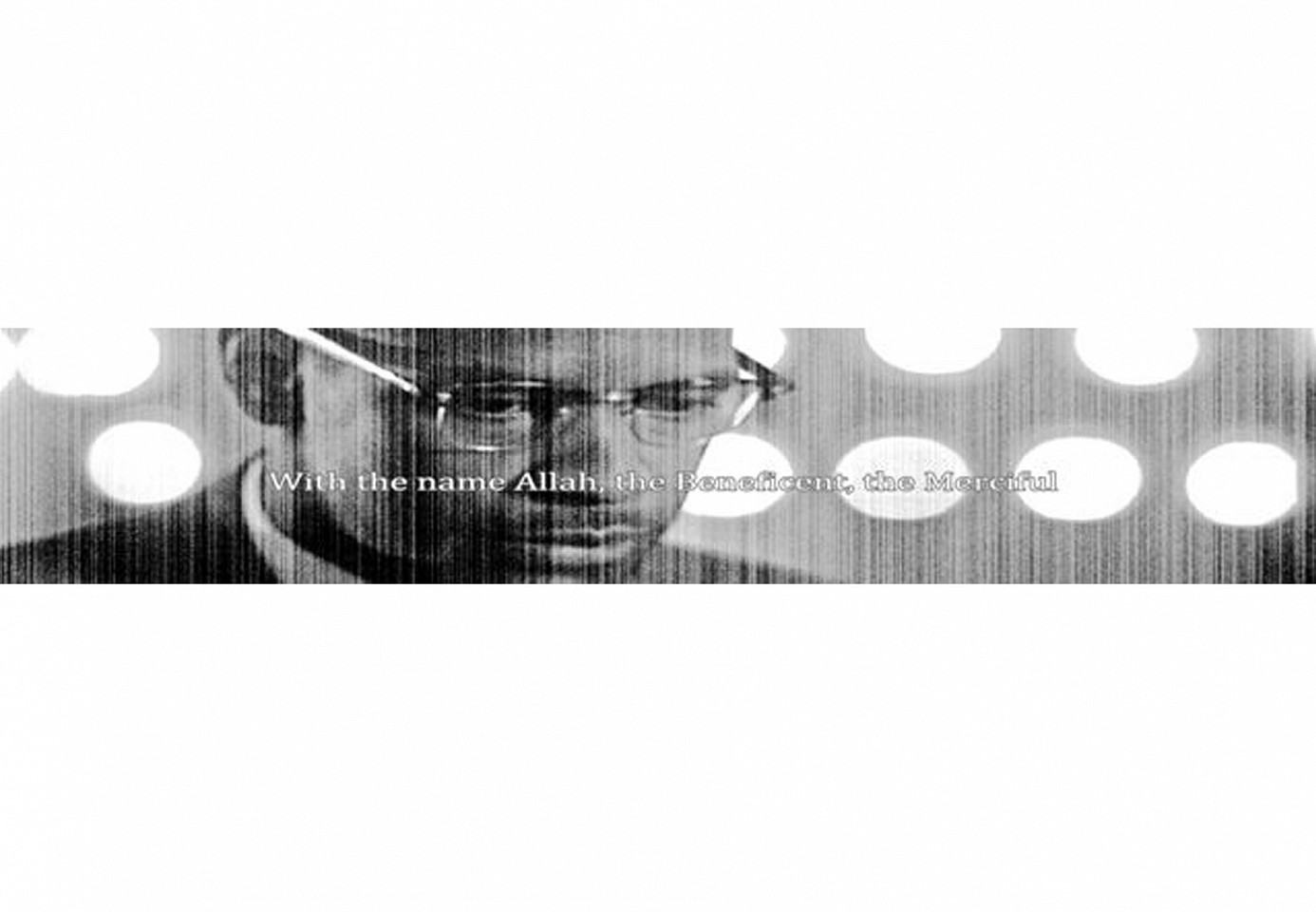
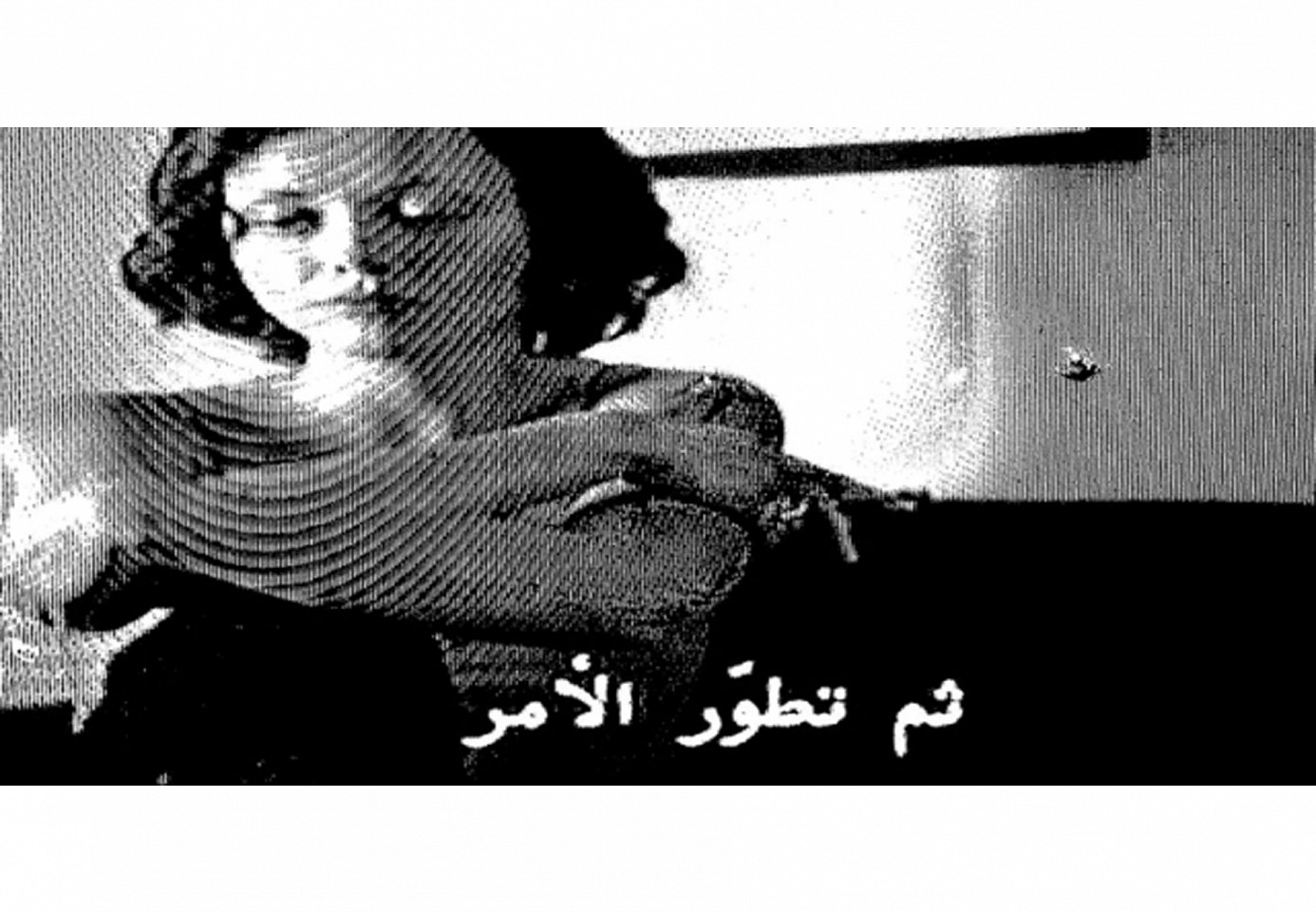
![<p><span class="viewer-caption-artist">Ayman Yossri Daydban</span></p>
<p><span class="viewer-caption-title"><i>Abeed Al Manazil [The House Negro]</i></span>, <span class="viewer-caption-year">2011</span></p>
<p><span class="viewer-caption-media">Fujicolor Crystal Archive Print</span></p>
<p><span class="viewer-caption-dimensions">26 x 51 cm each; 8 pieces</span></p>
<p><span class="viewer-caption-description">From the Subtitle series
Edition of 3 + 1 AP</span></p>
<p><span class="viewer-caption-inventory">AYD0315</span></p>
<p><span class="viewer-caption-aux"></span></p>](/images/26986_h960w1600gt.5.jpg)
